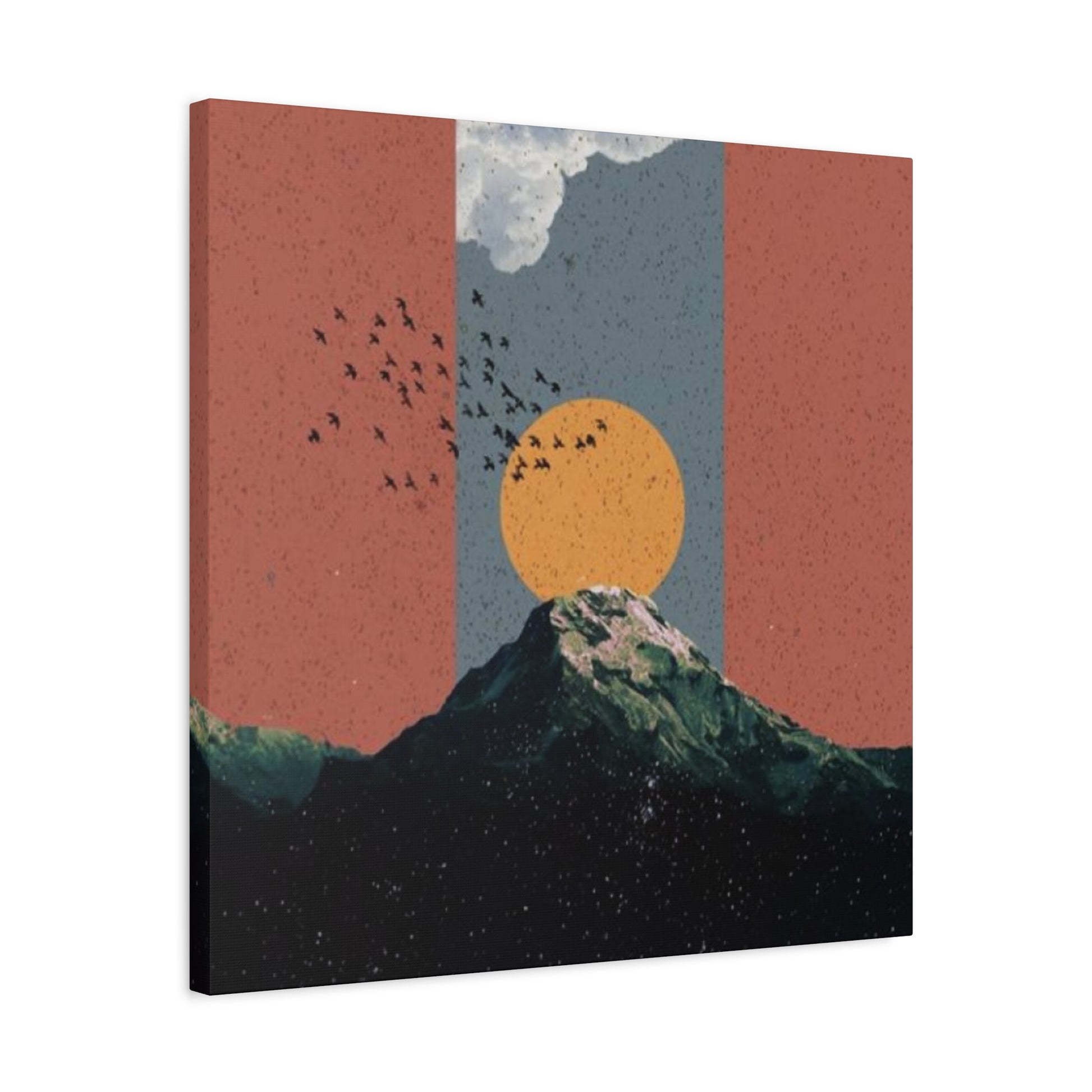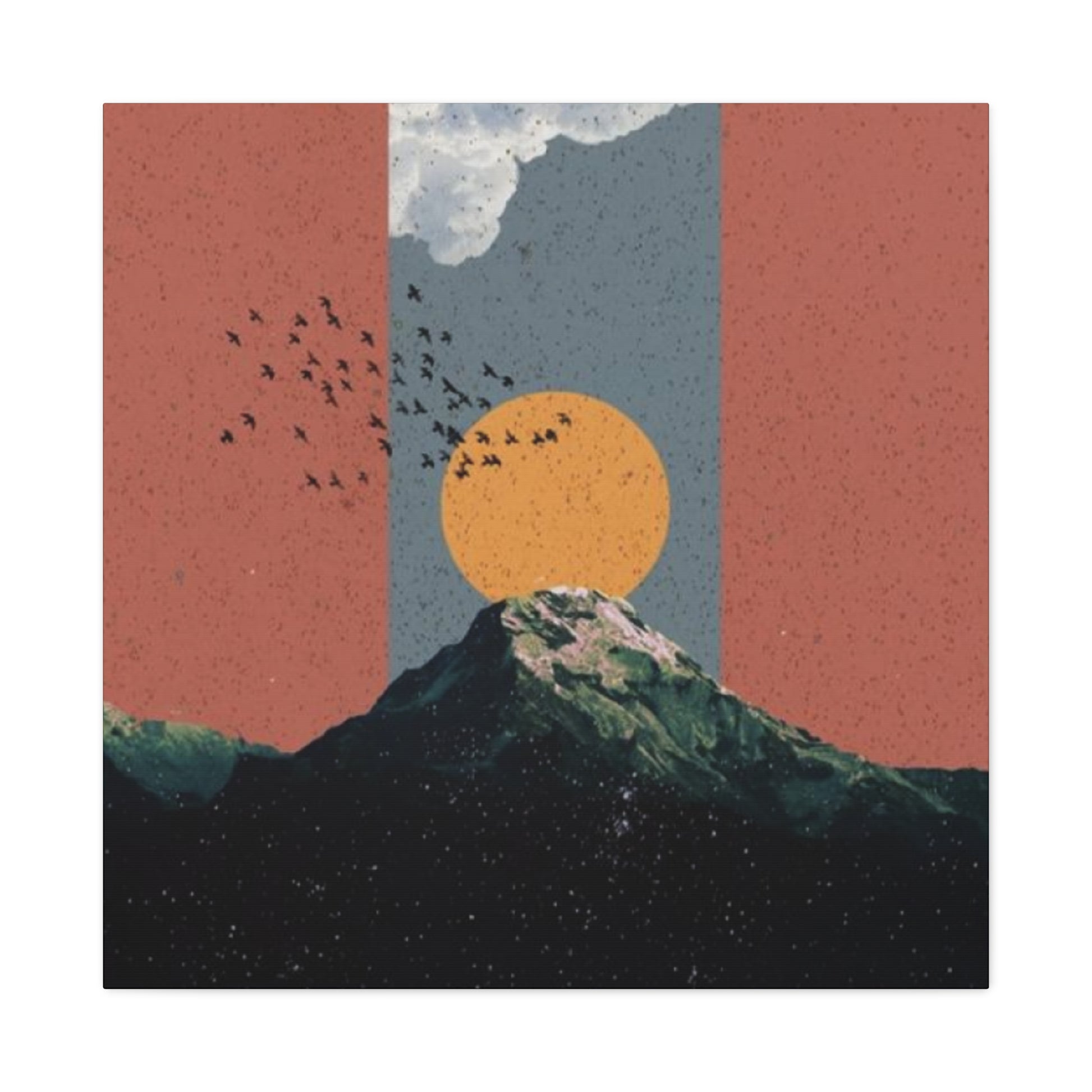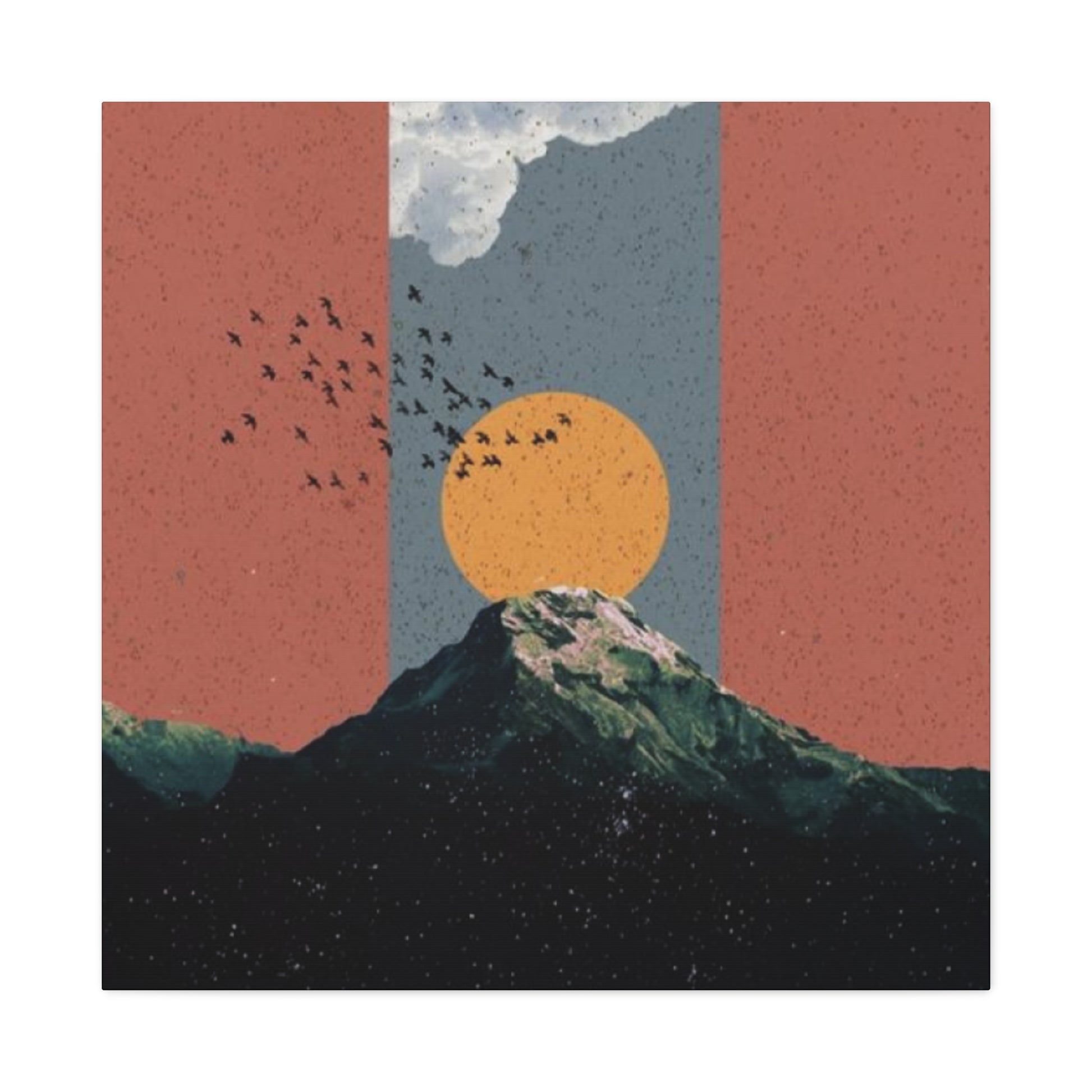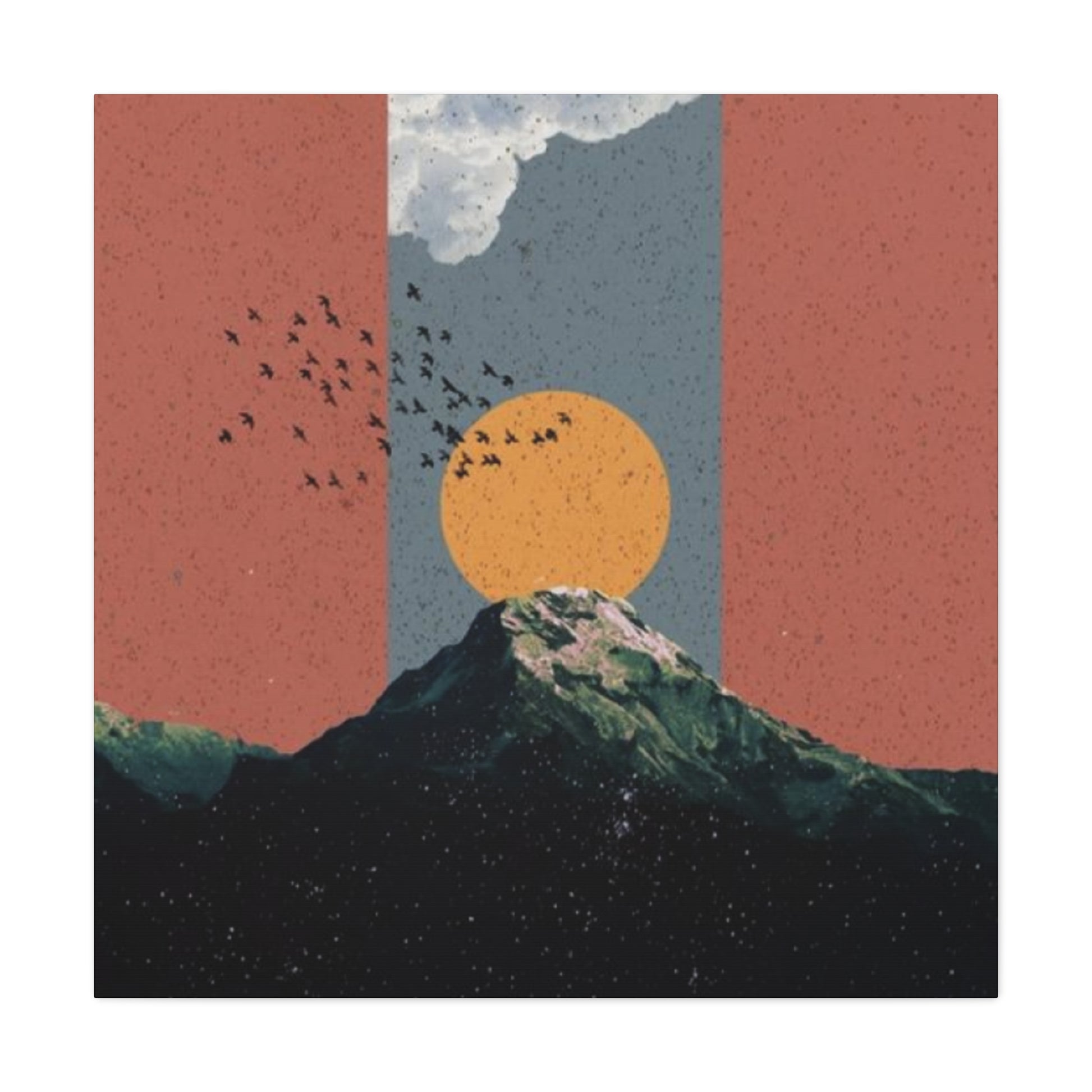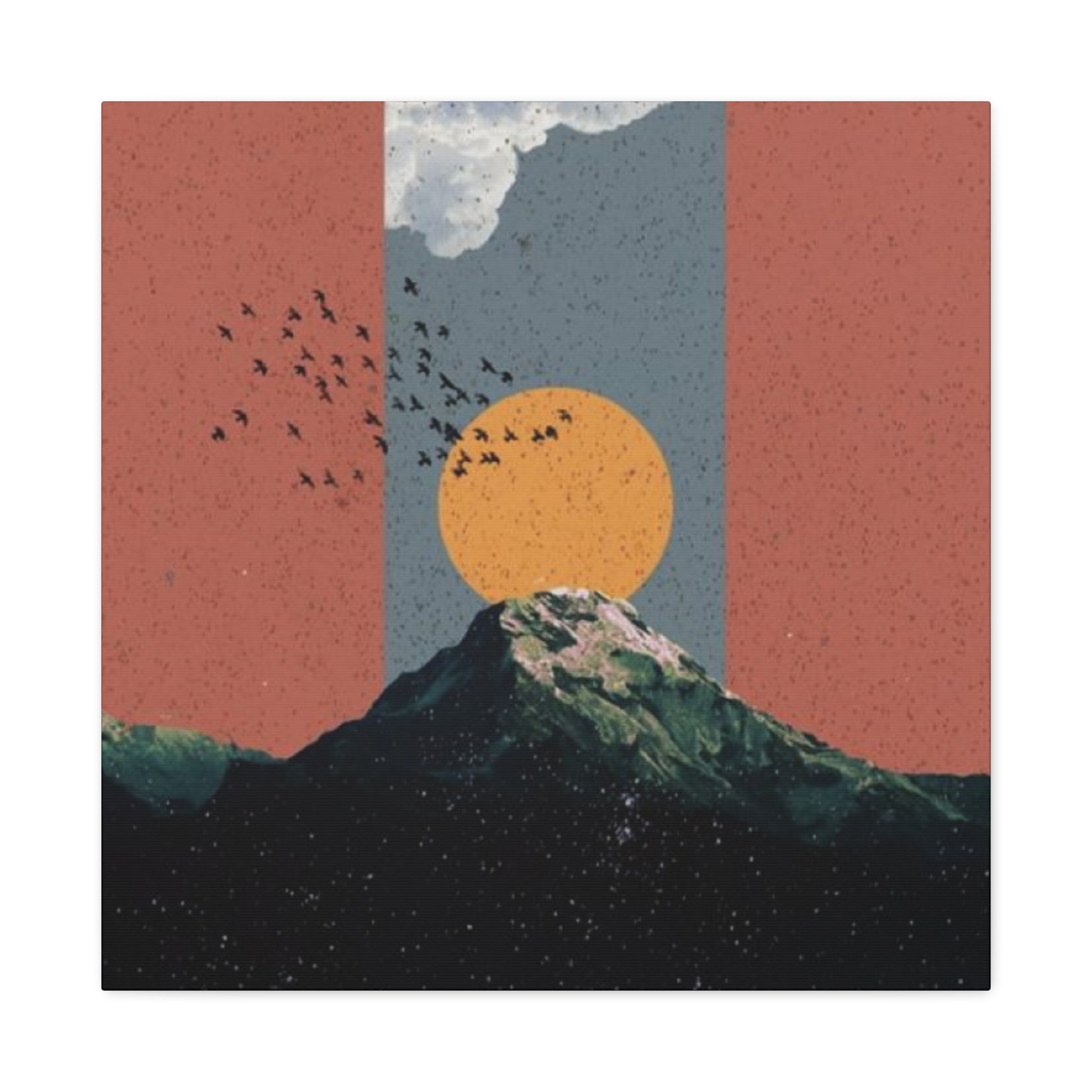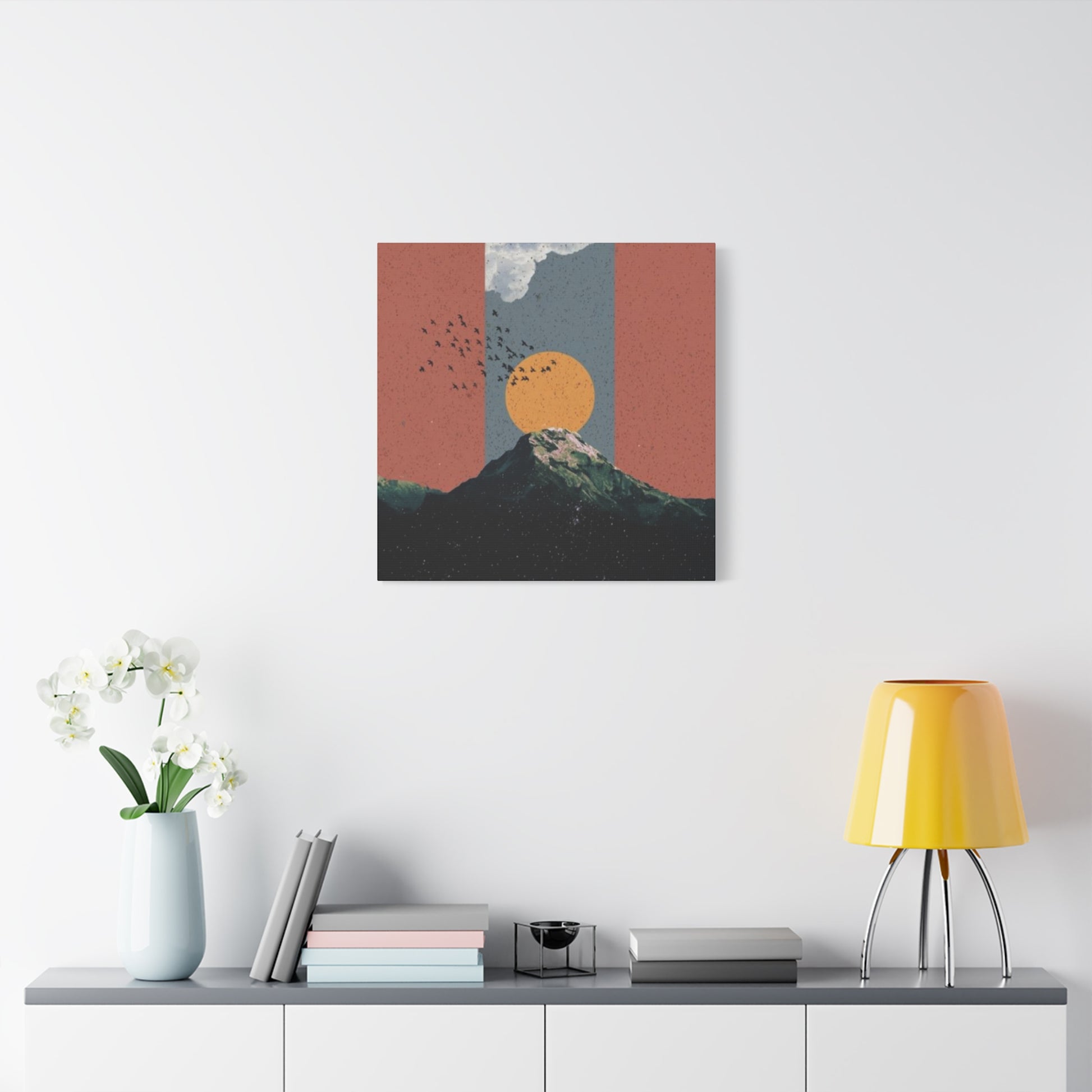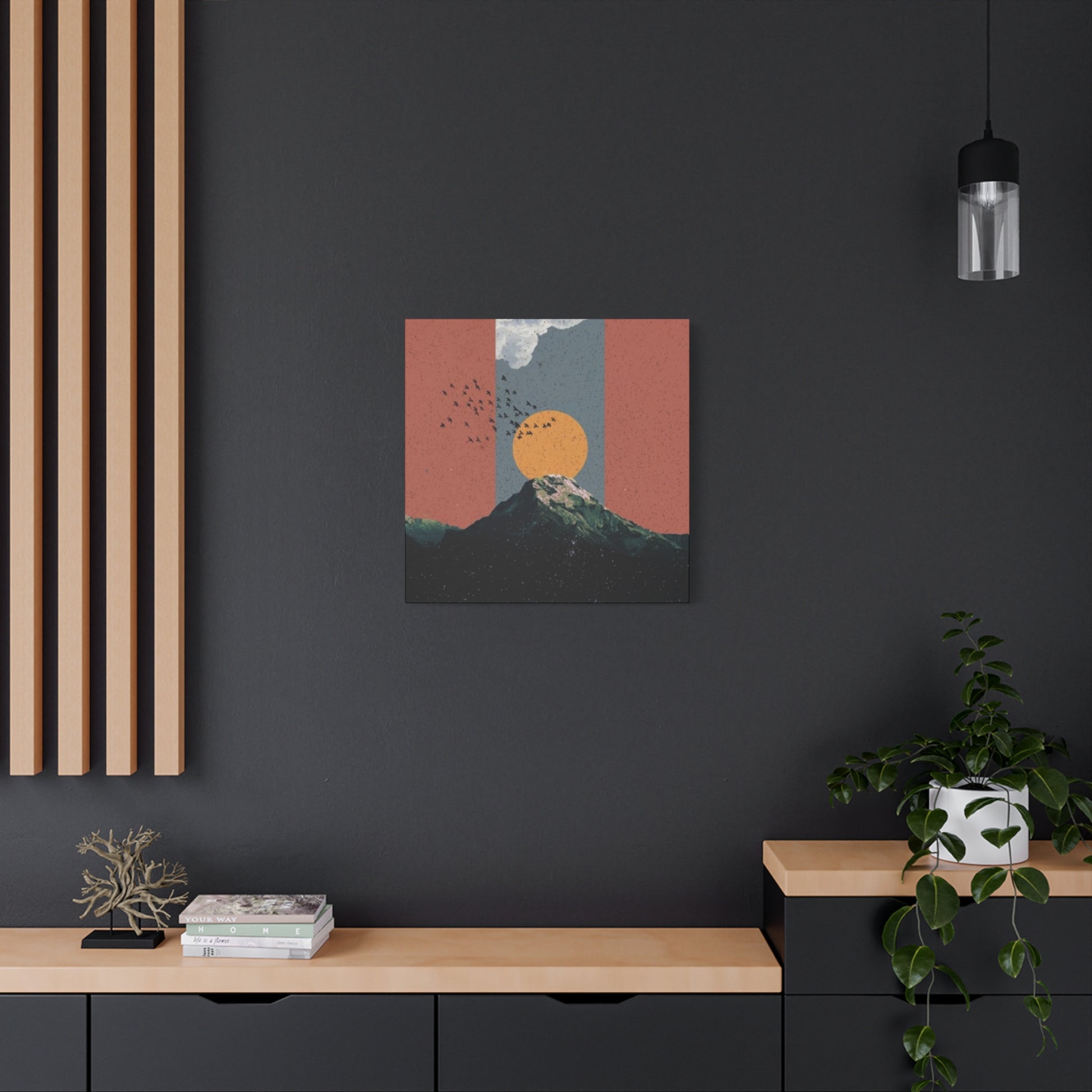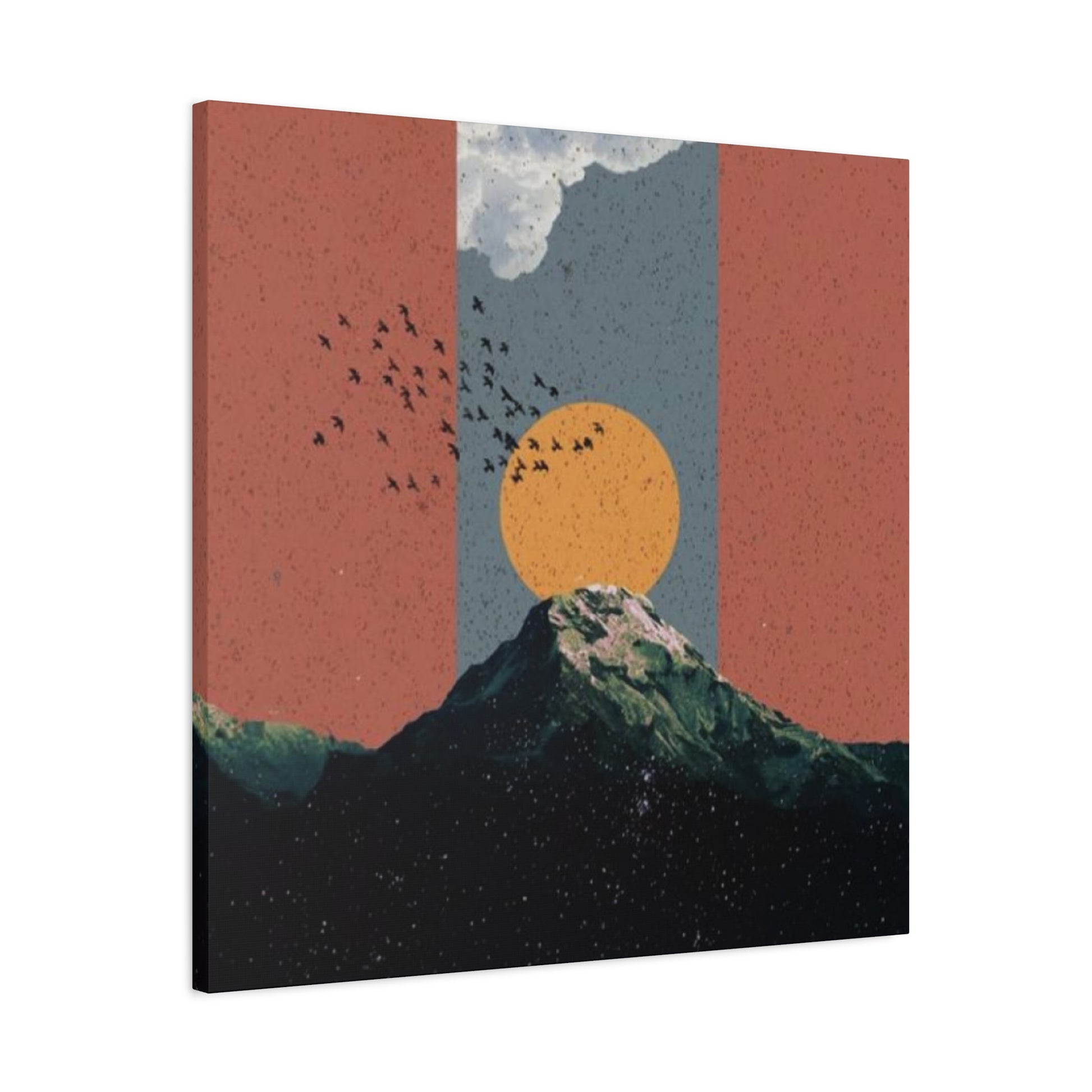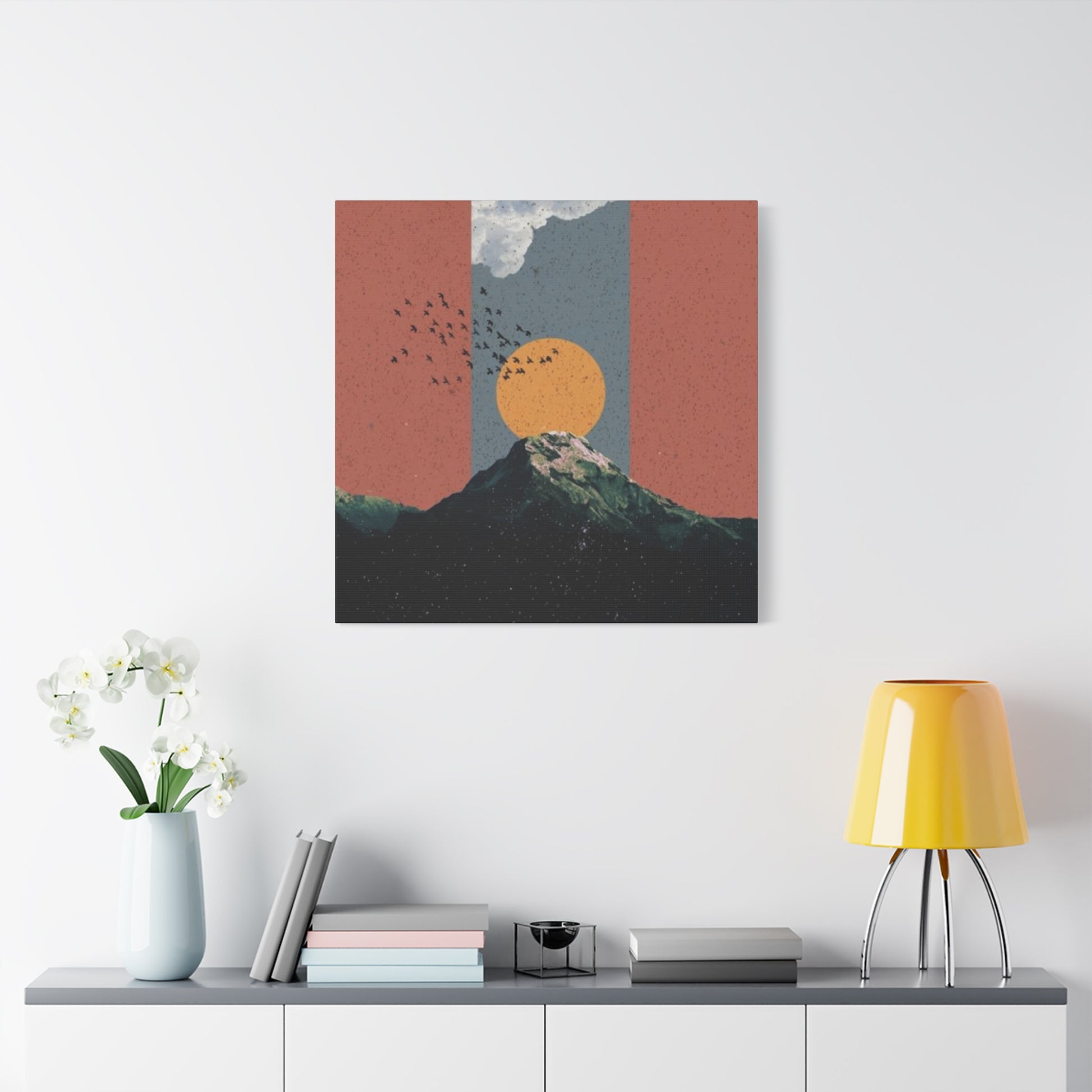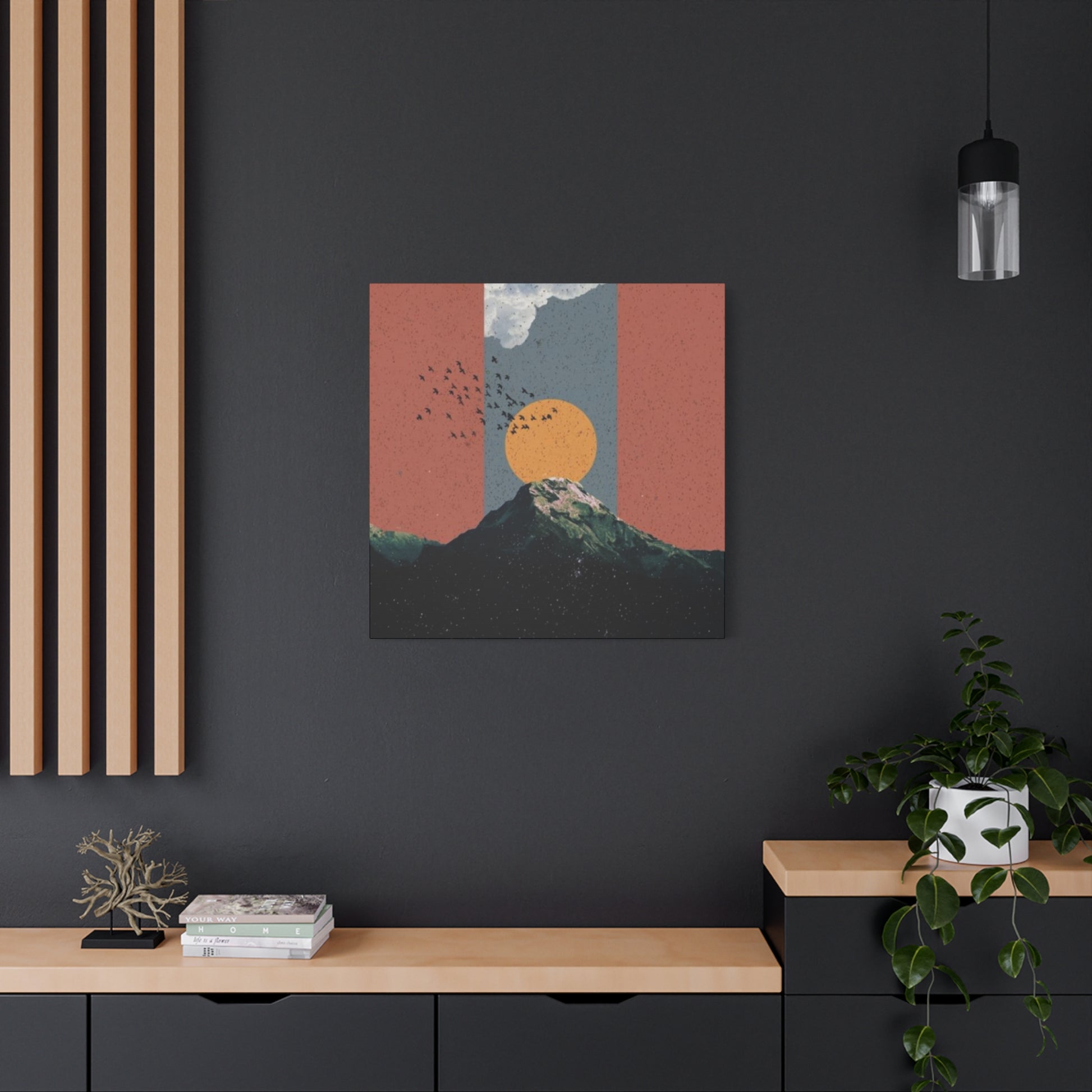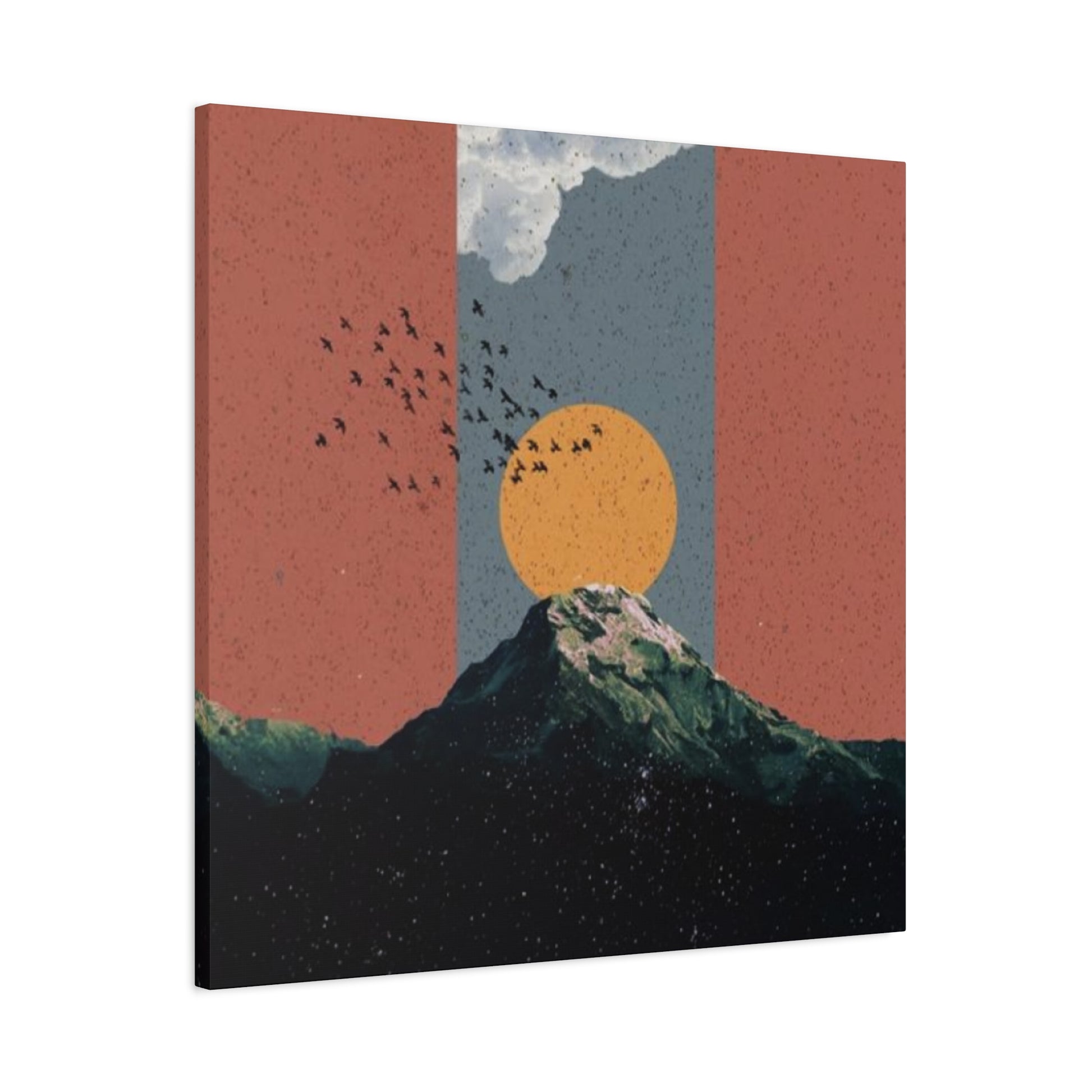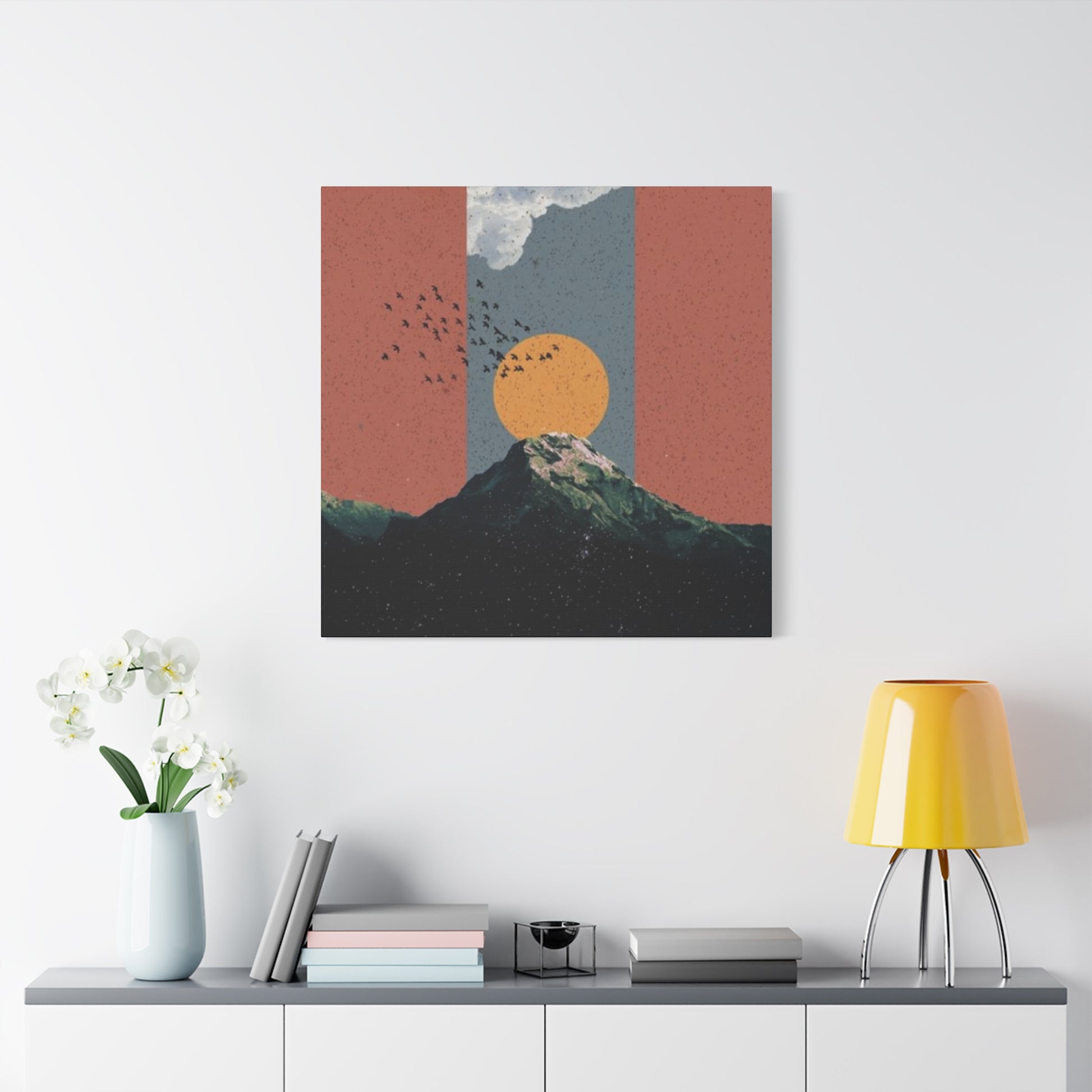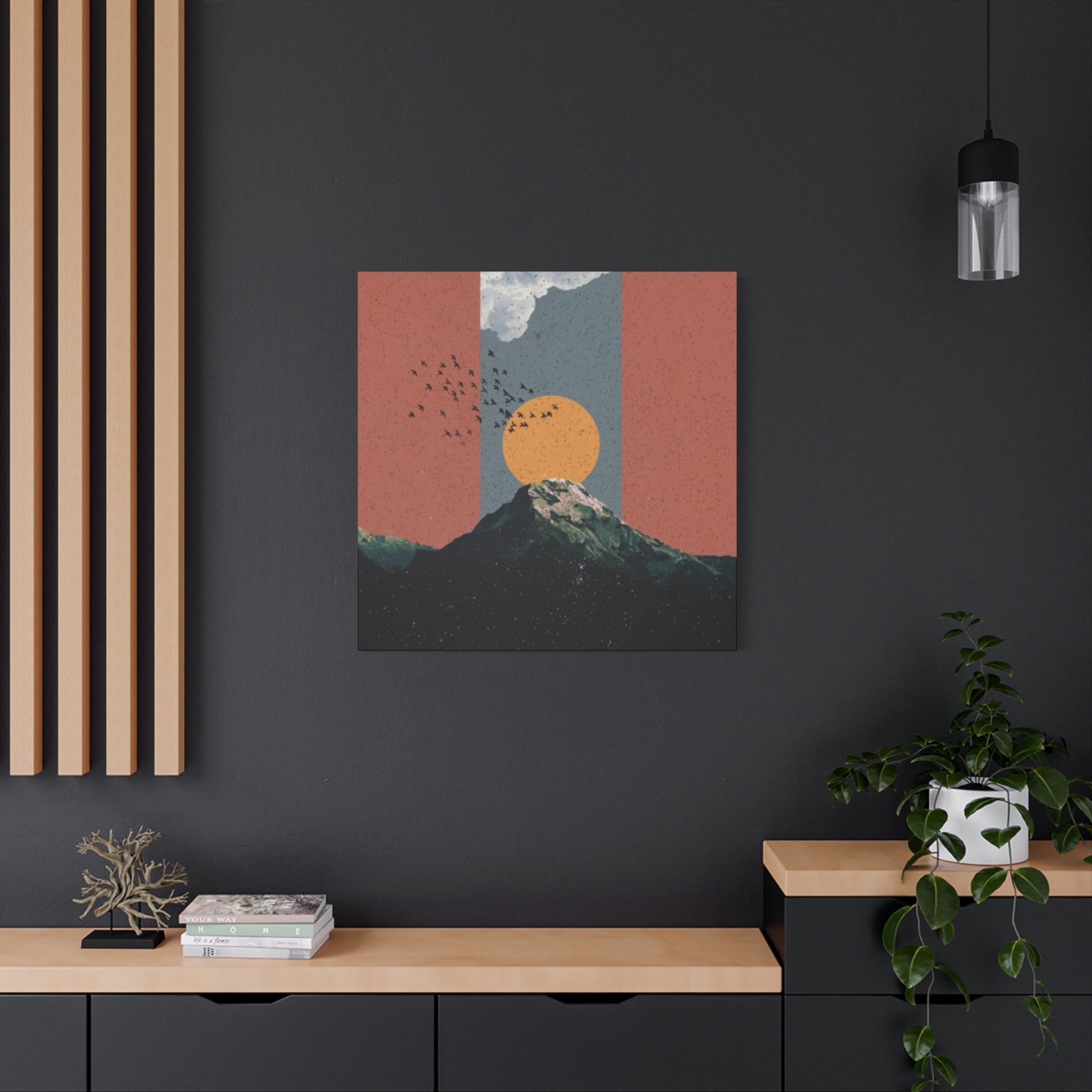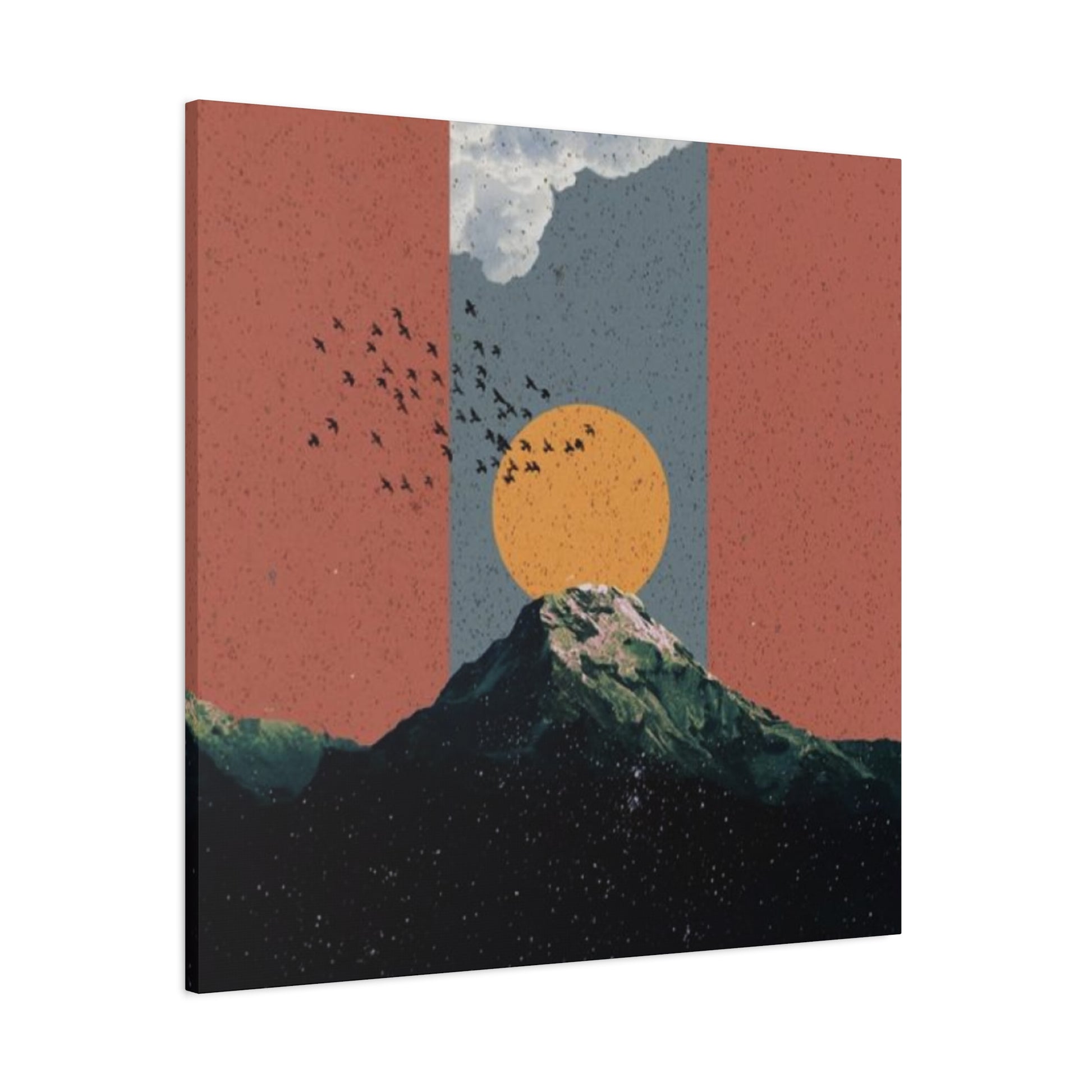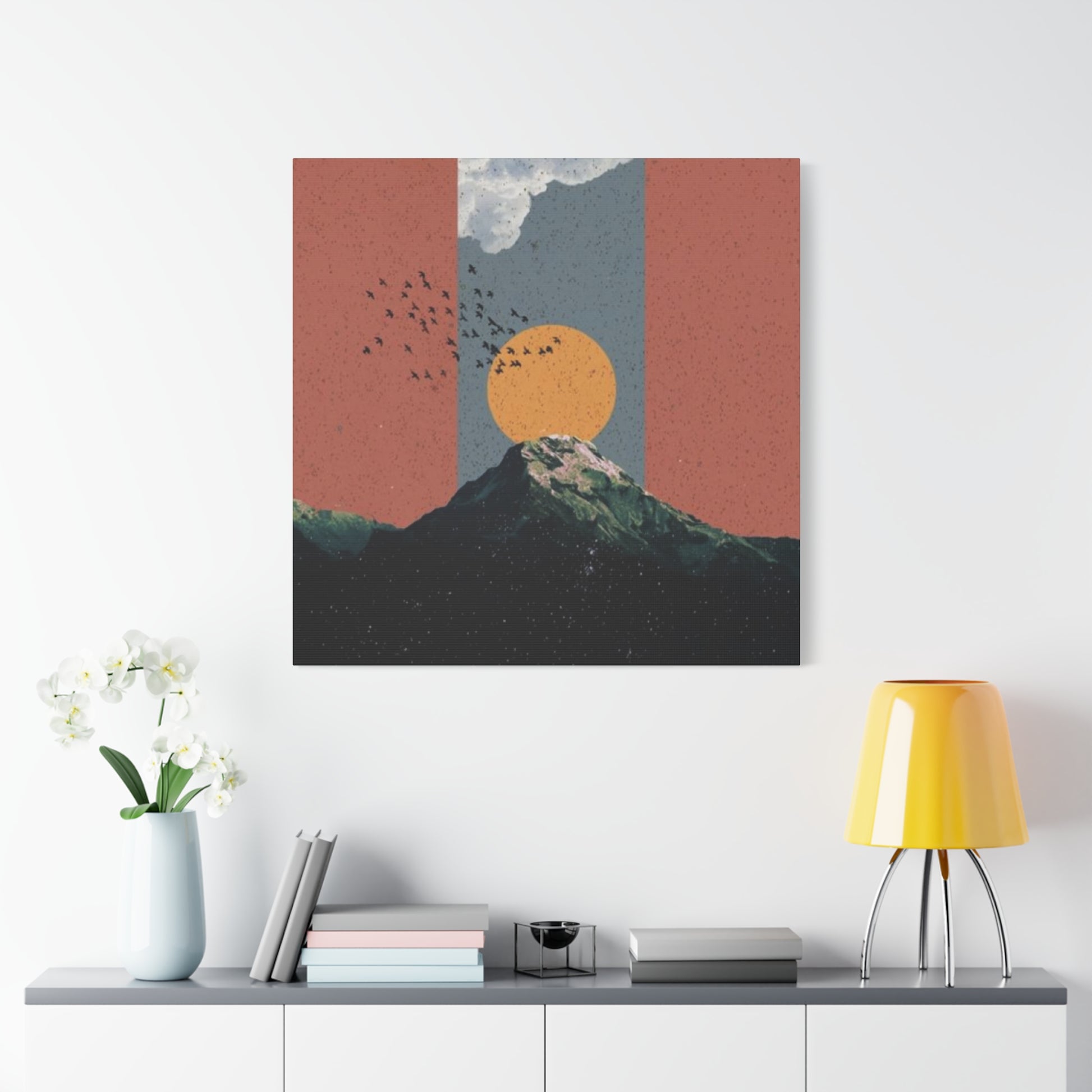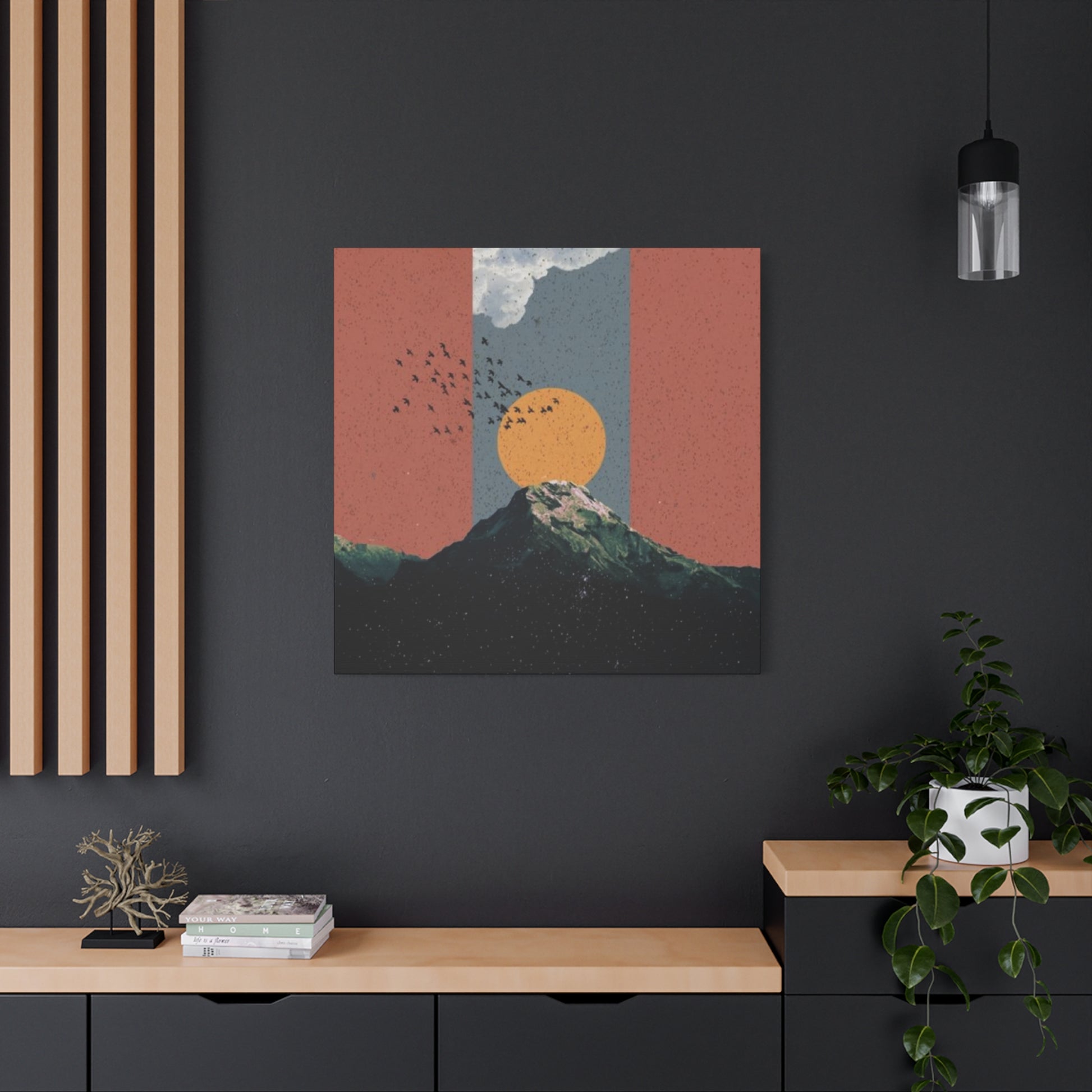Sunrise In Mountains Modernism Wall Art & Canvas Prints
Sunrise In Mountains Modernism Wall Art & Canvas Prints
Couldn't load pickup availability
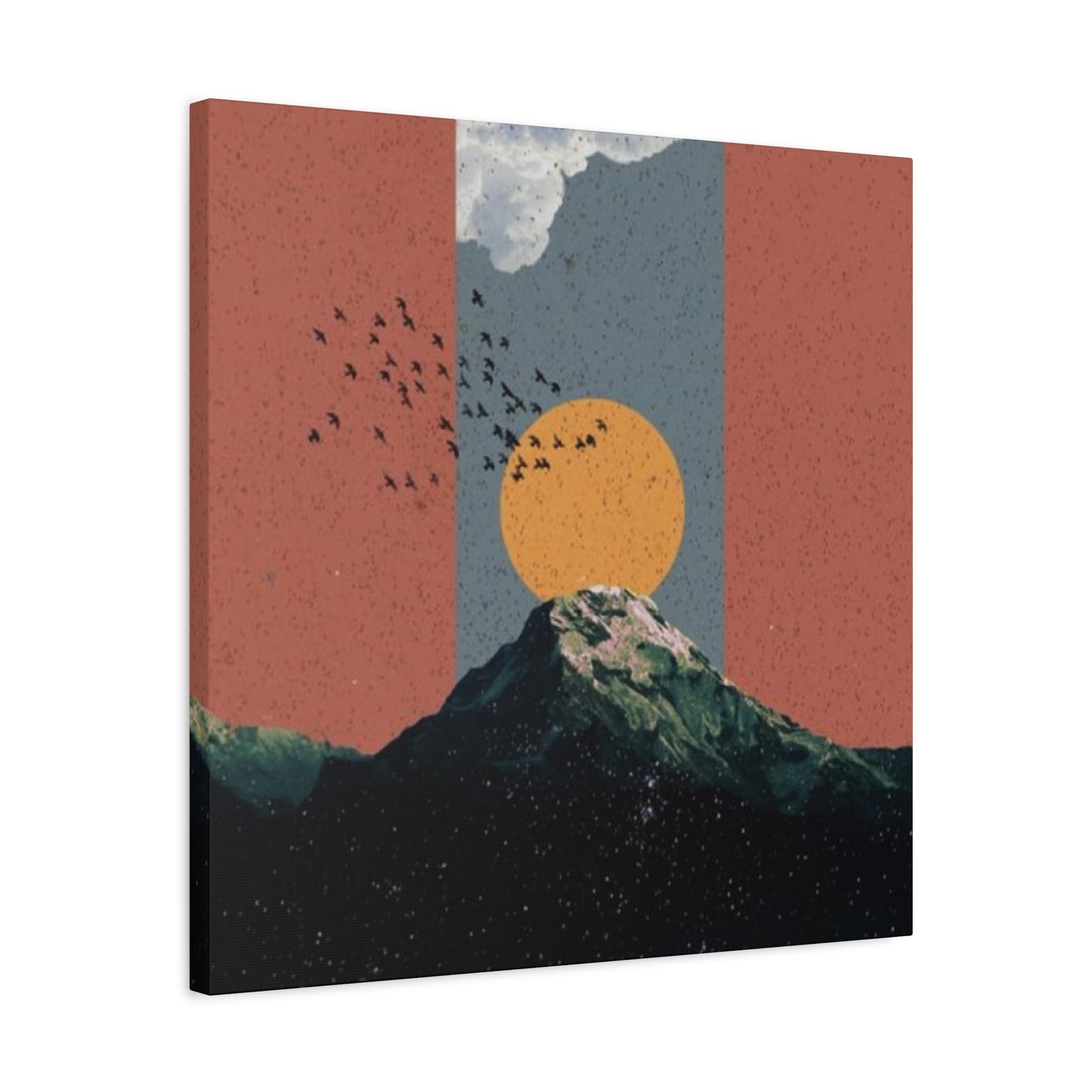
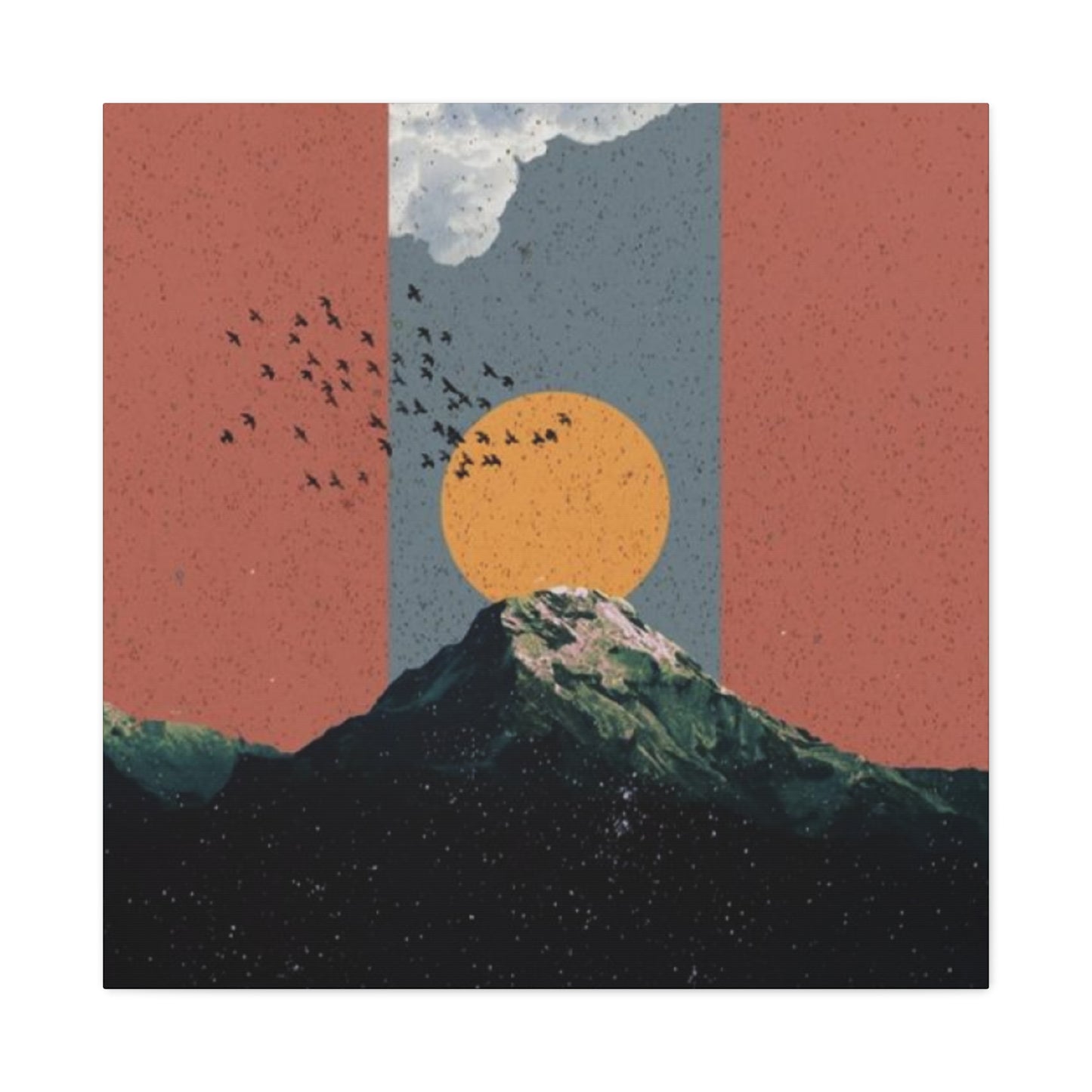
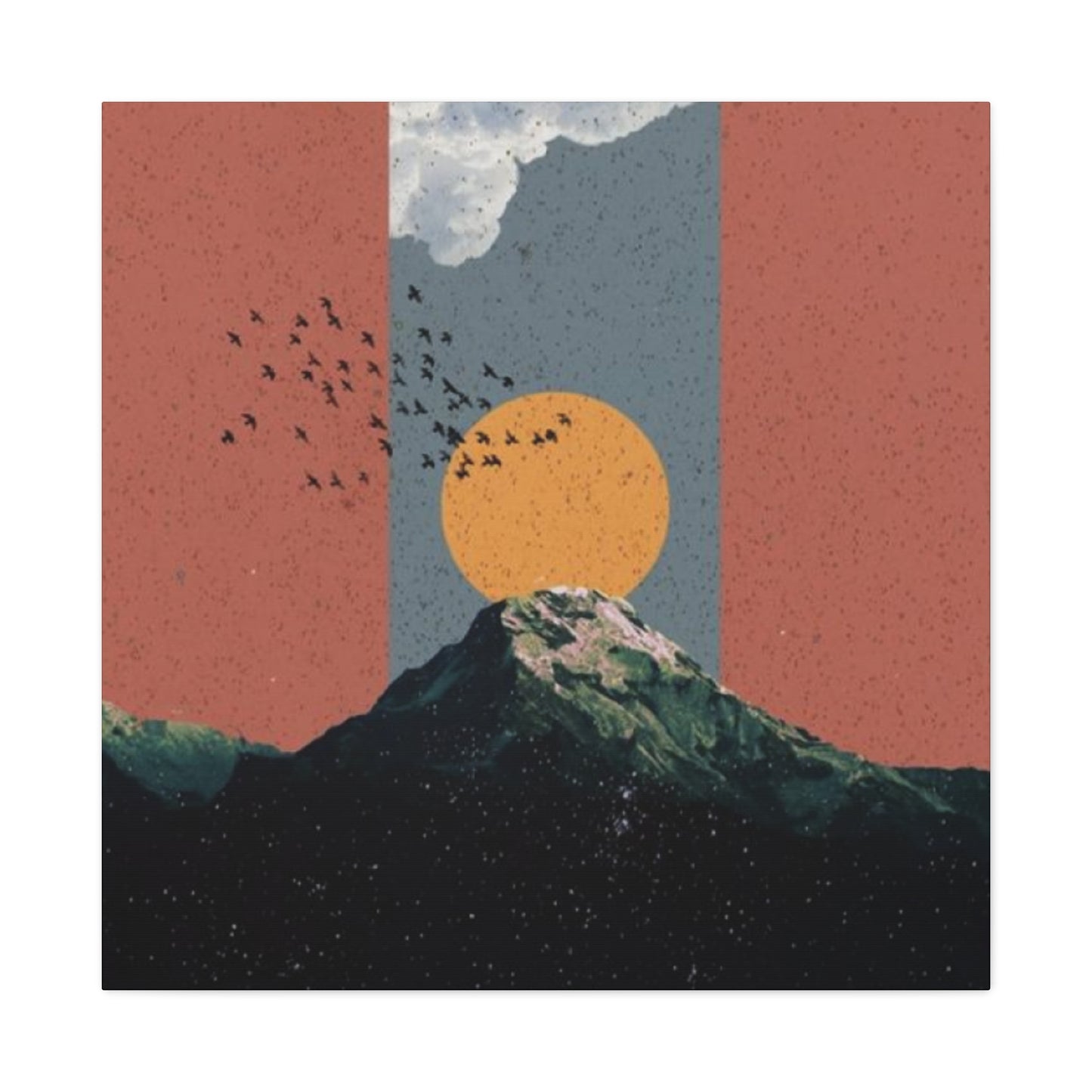
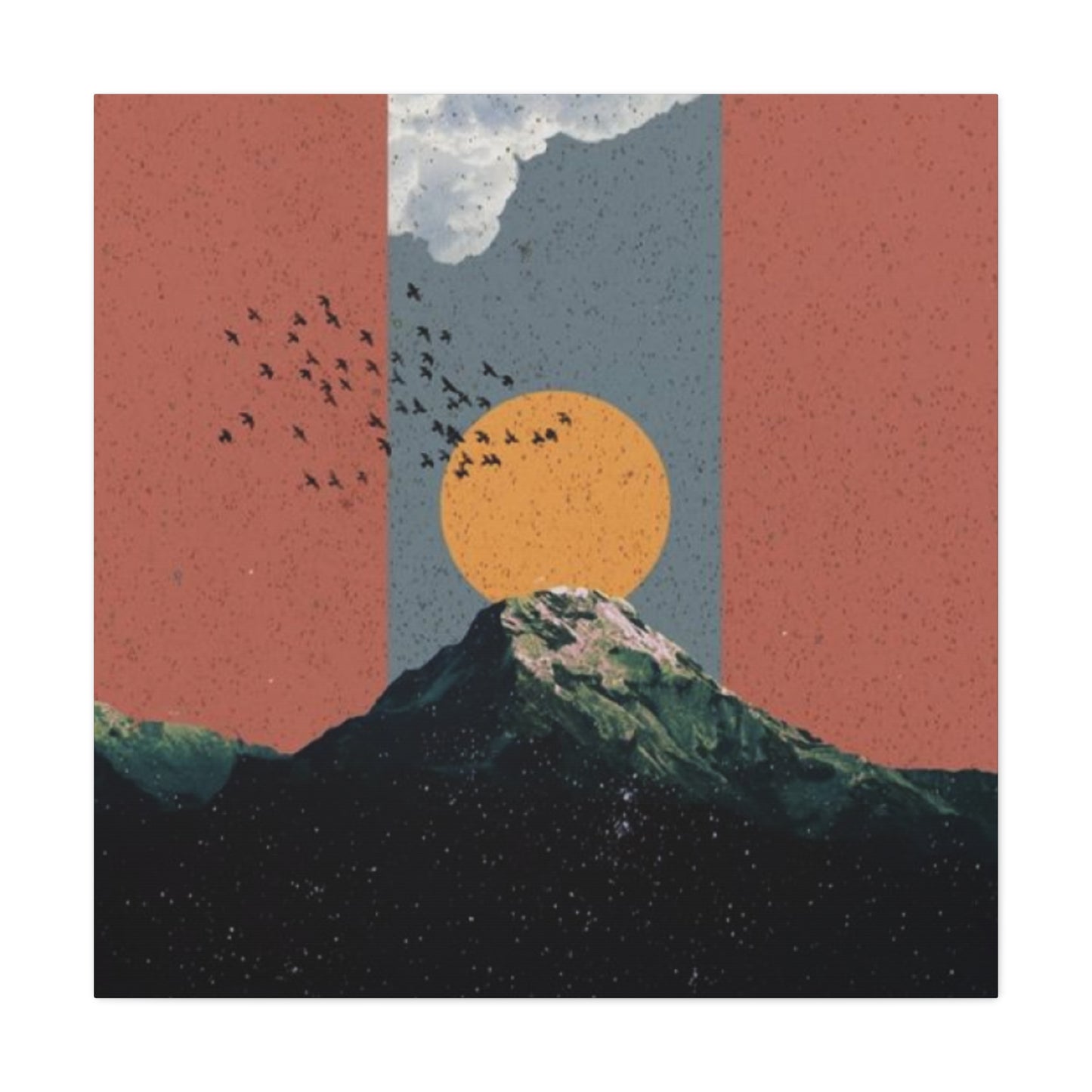
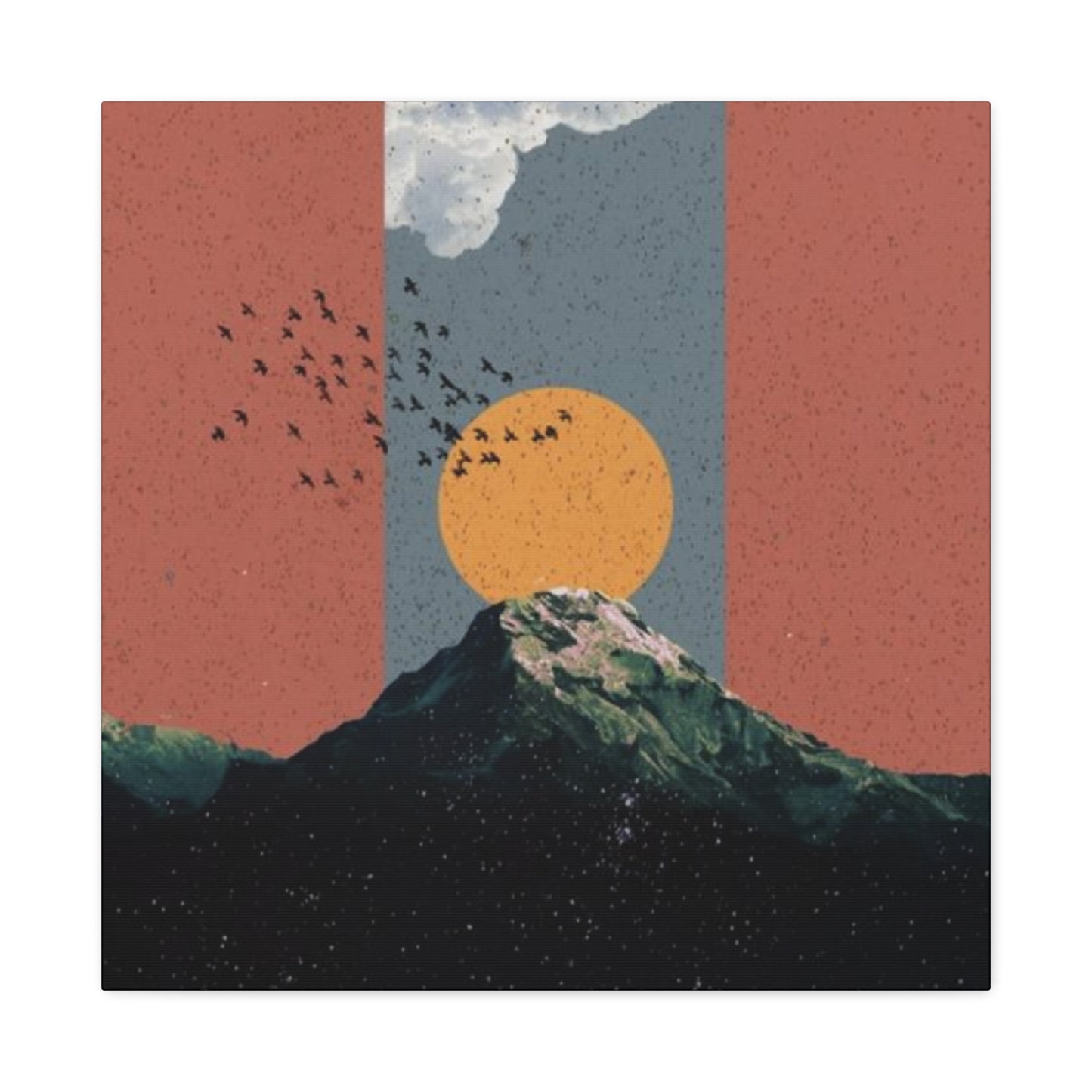
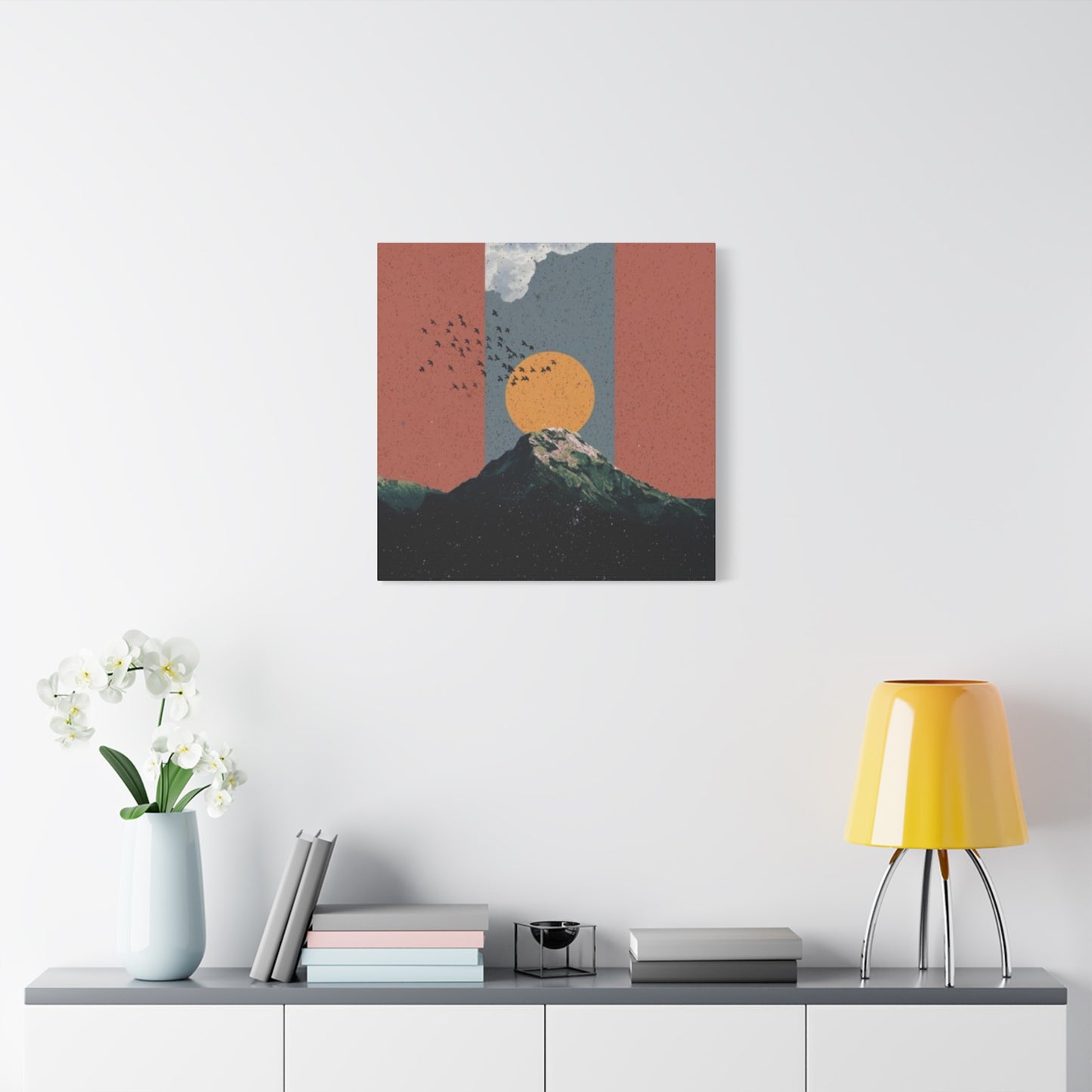
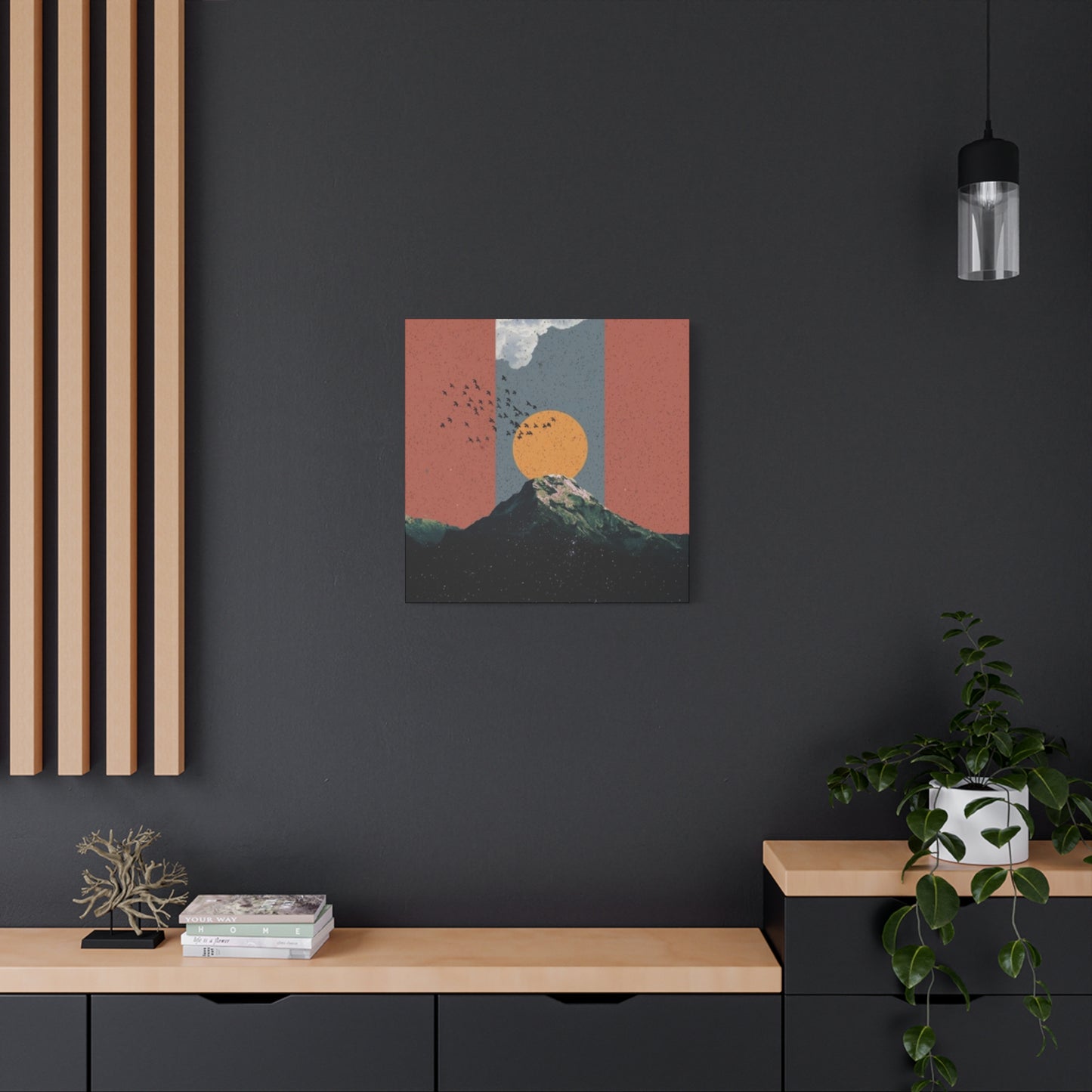
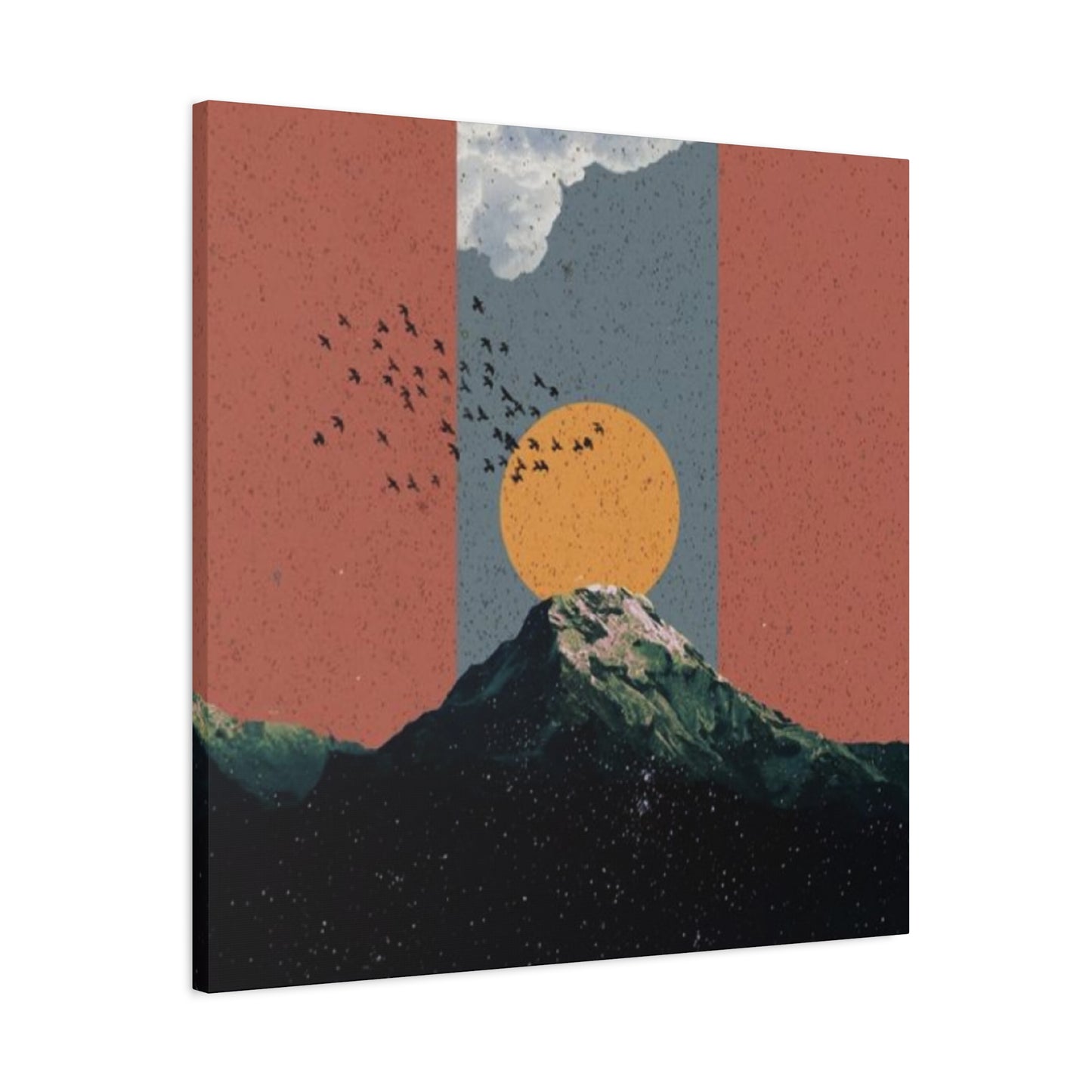
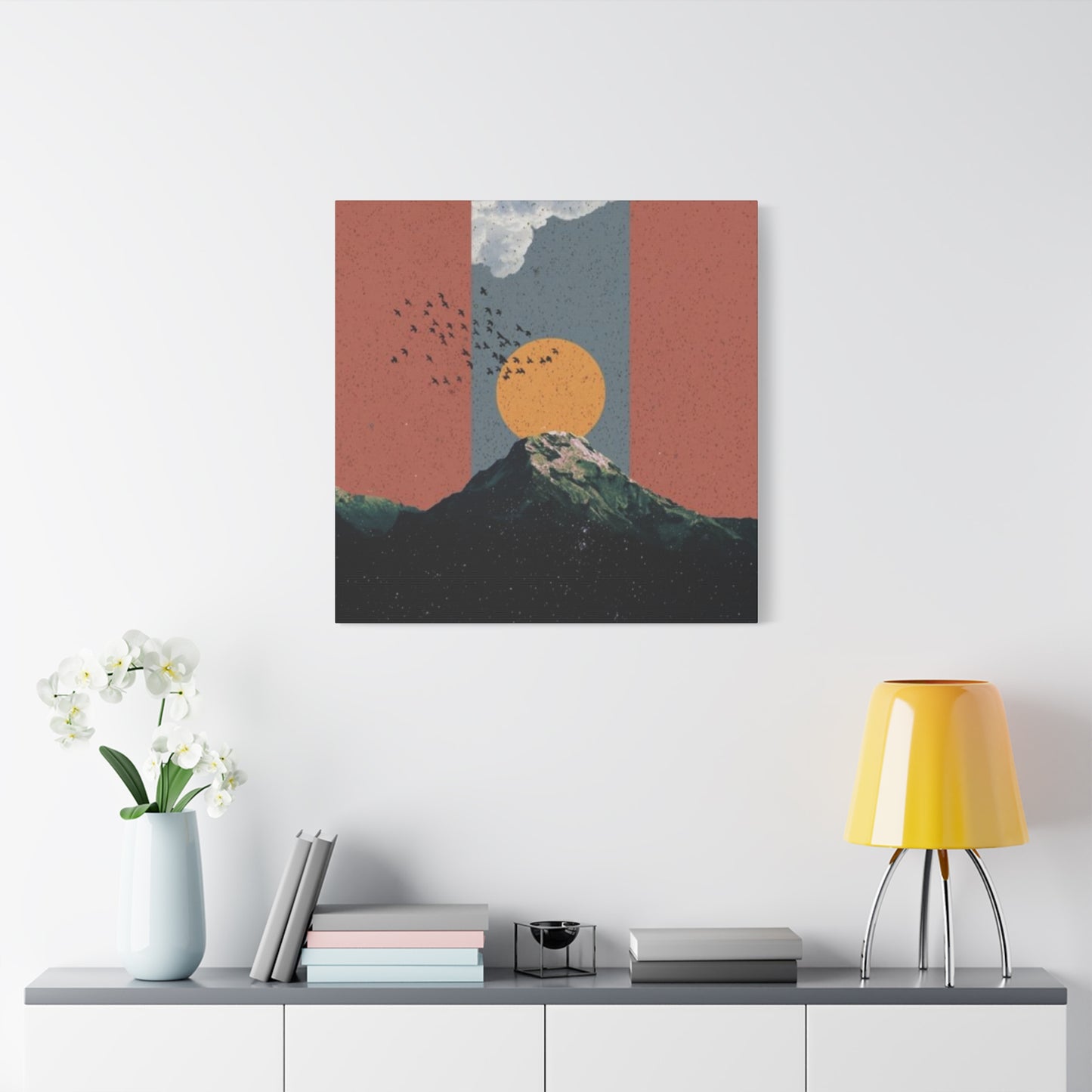
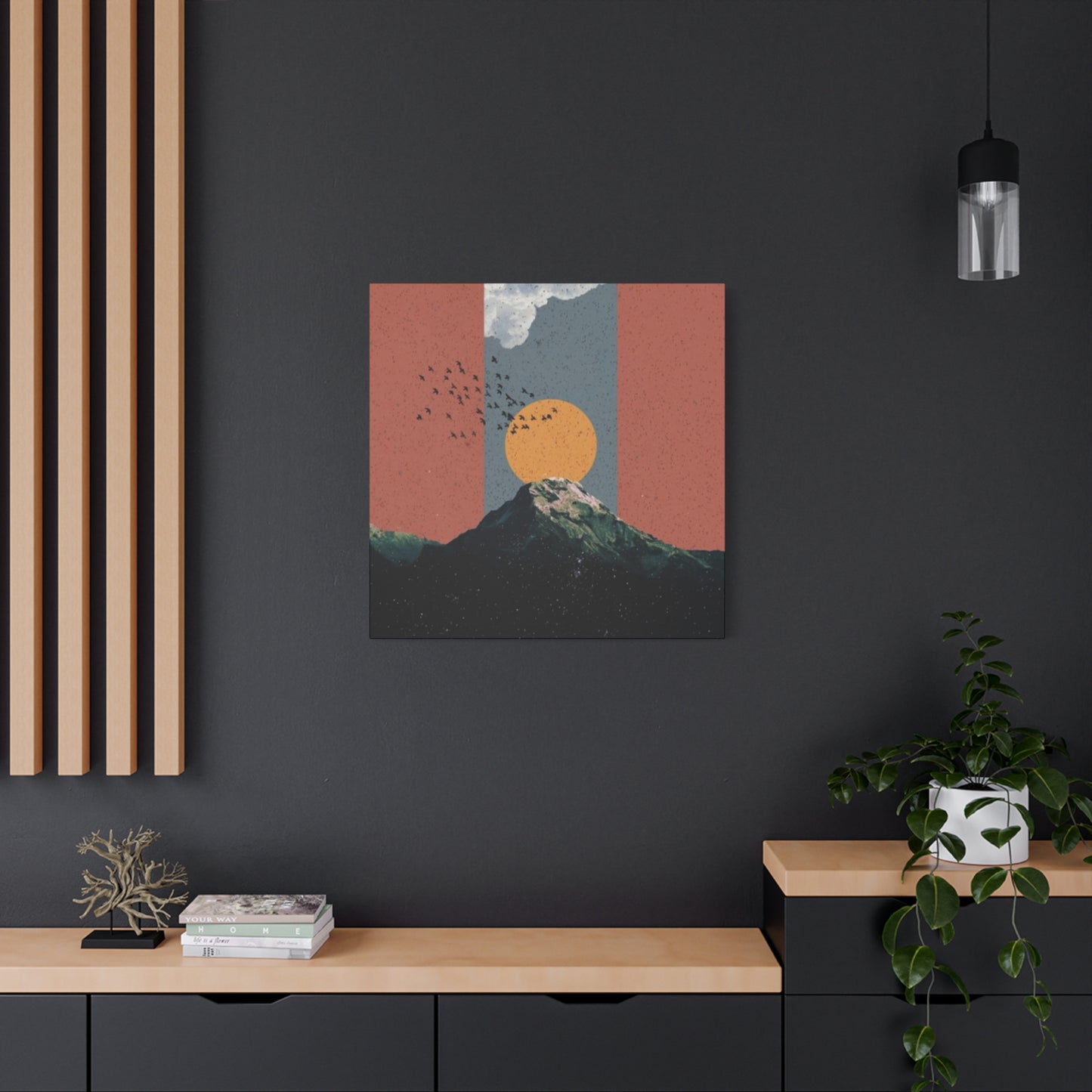
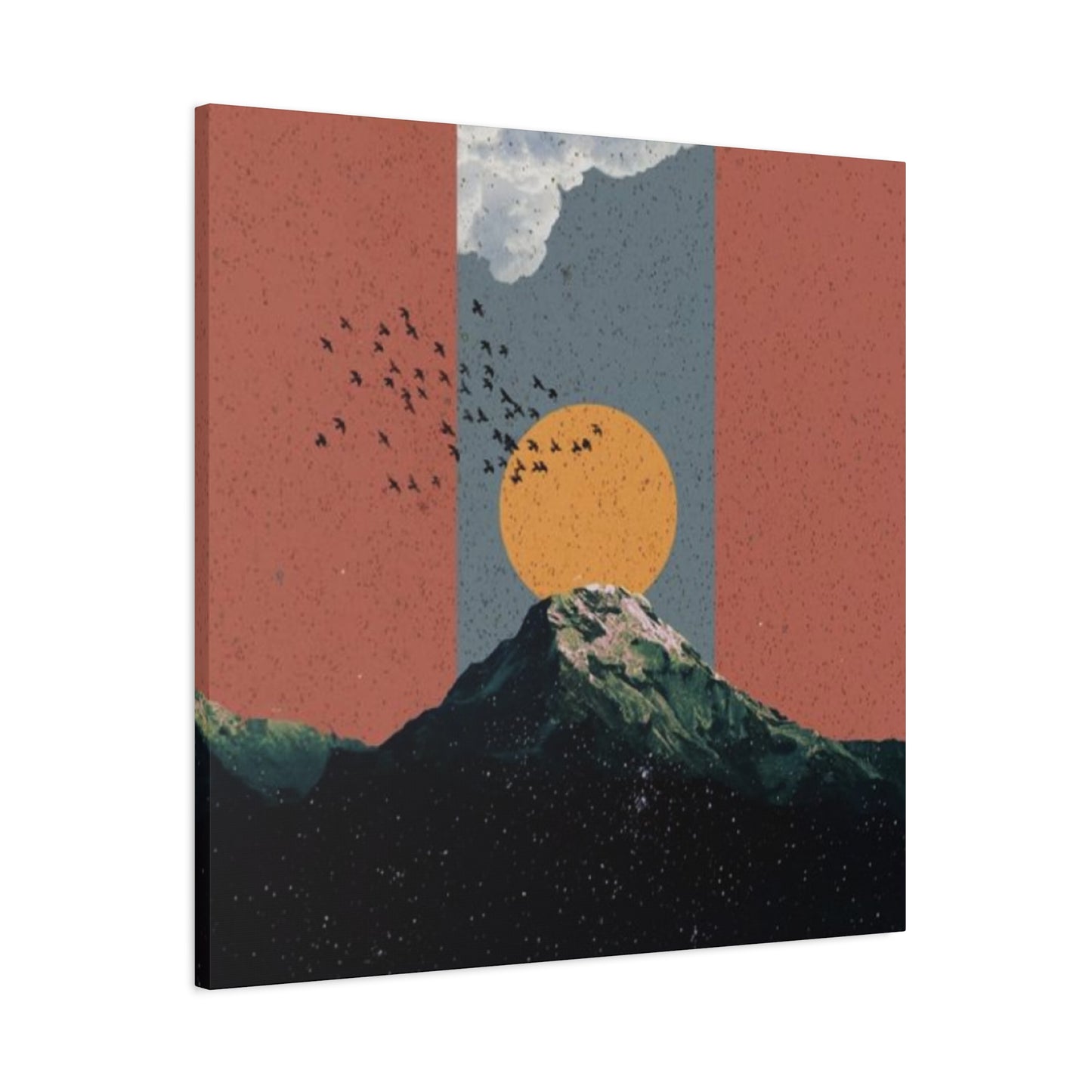
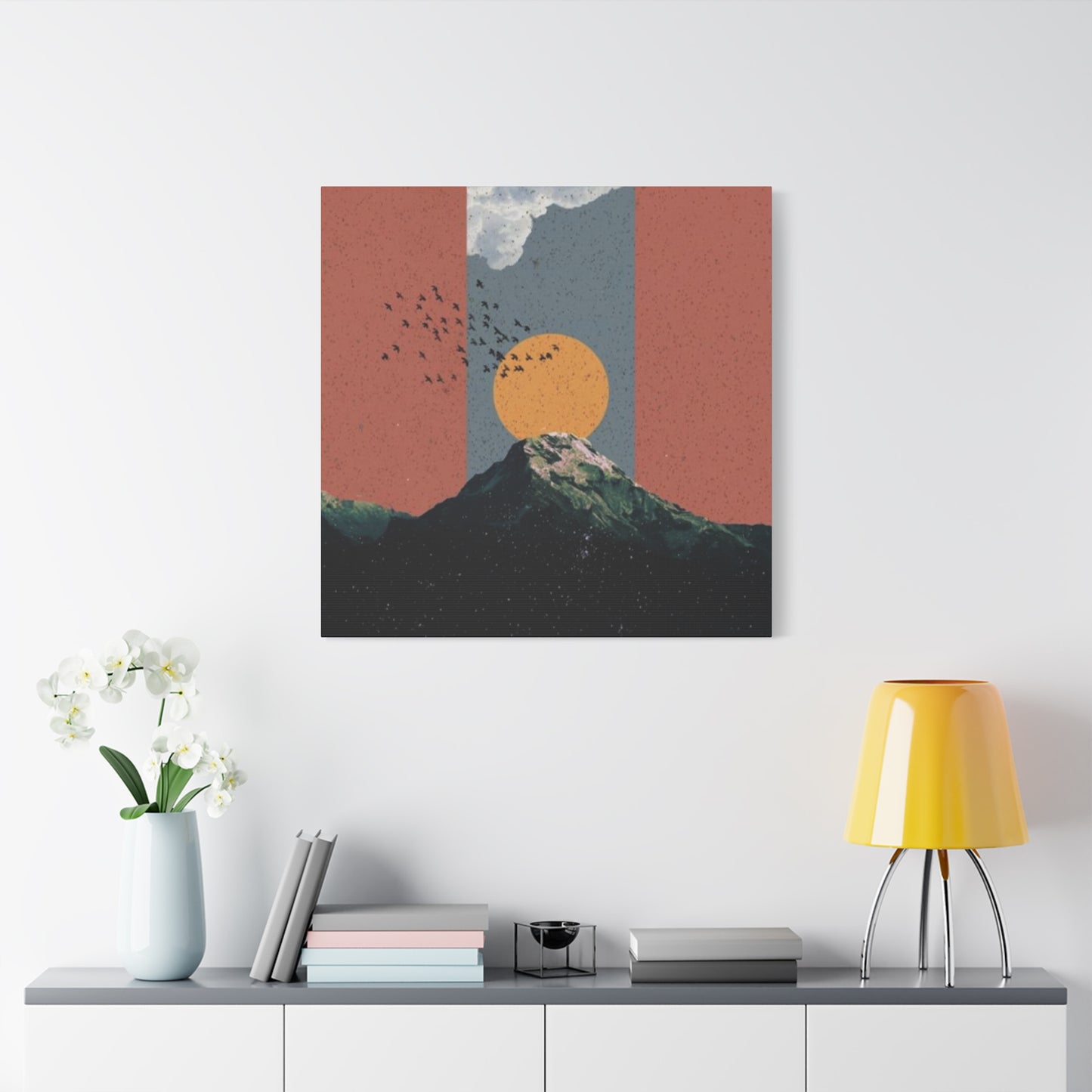
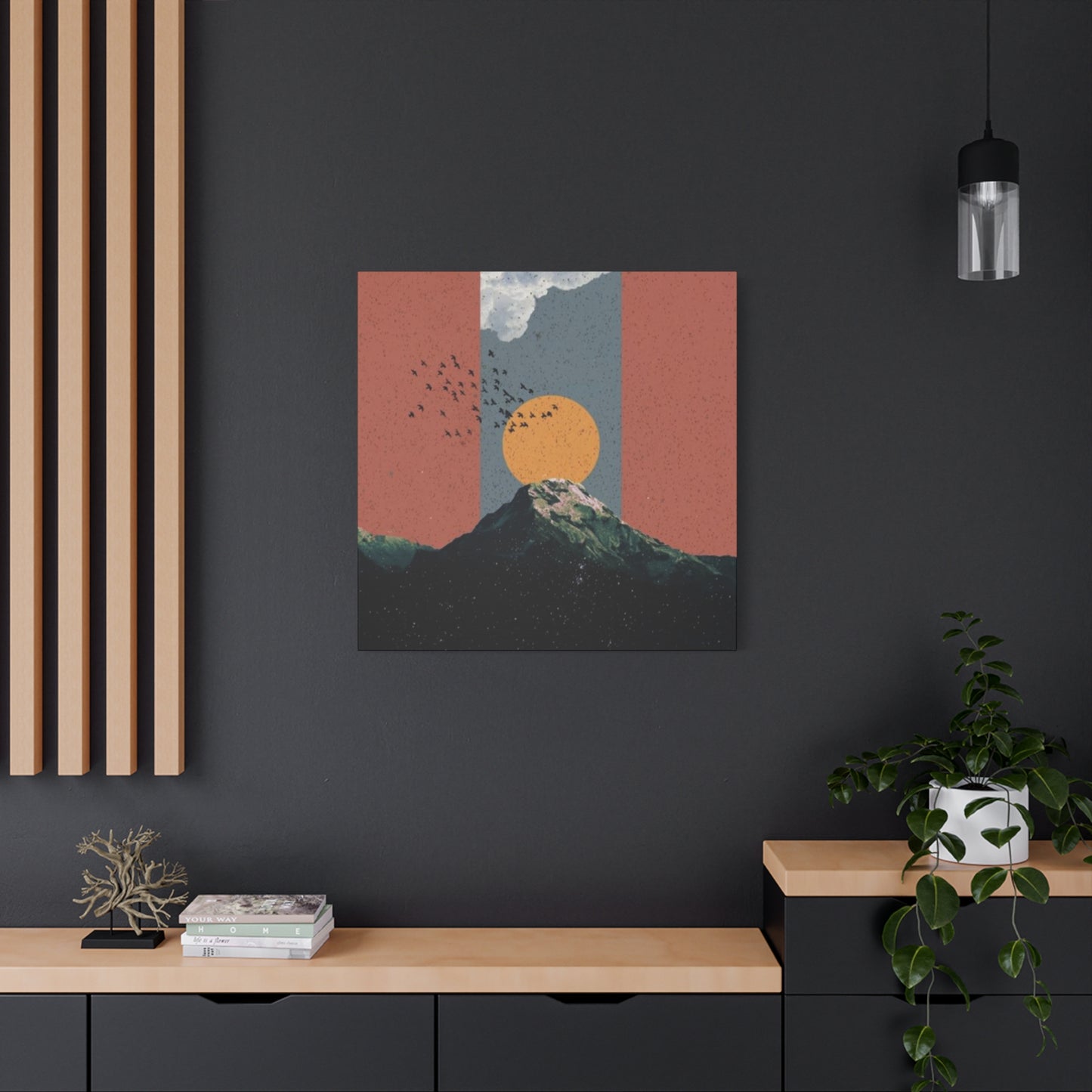
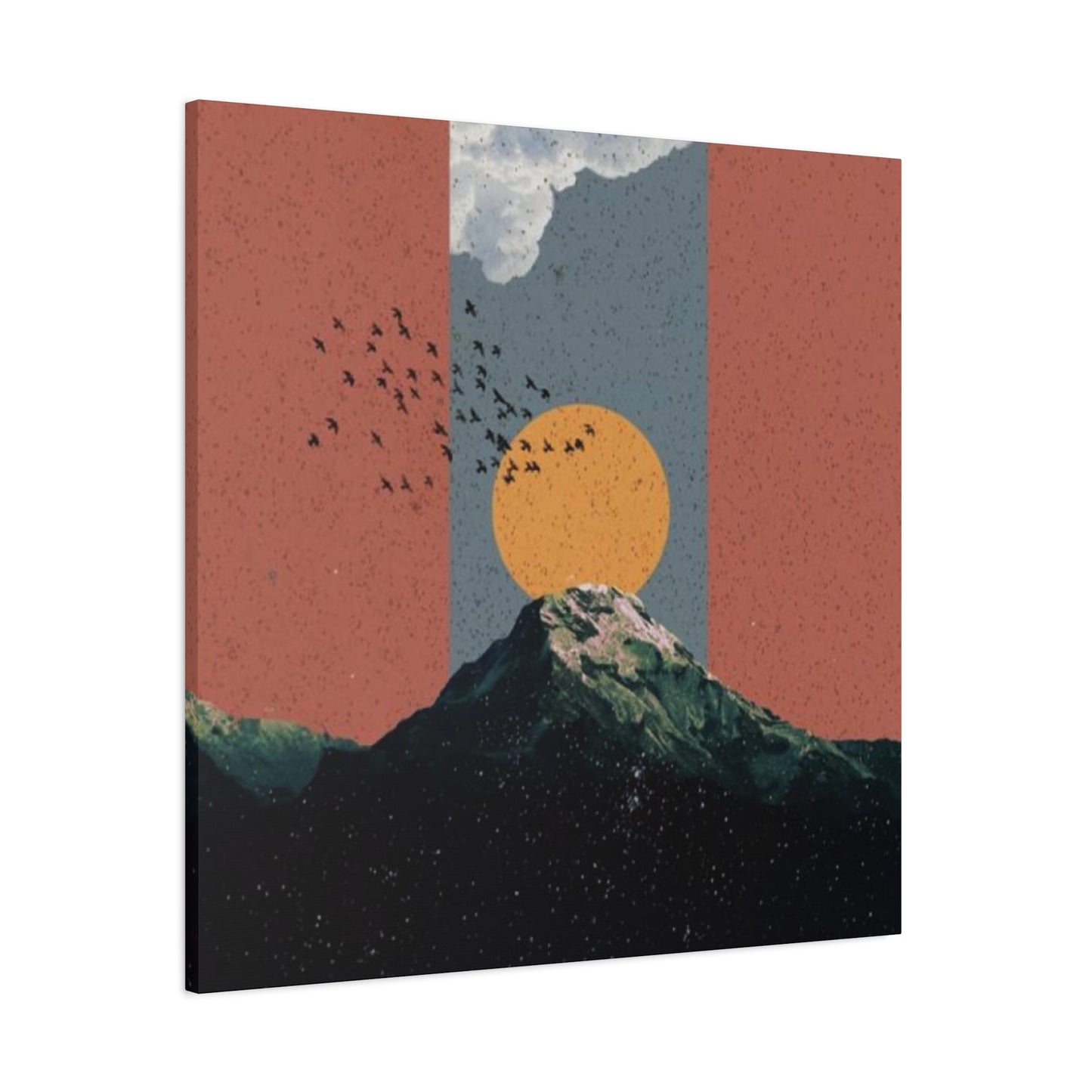
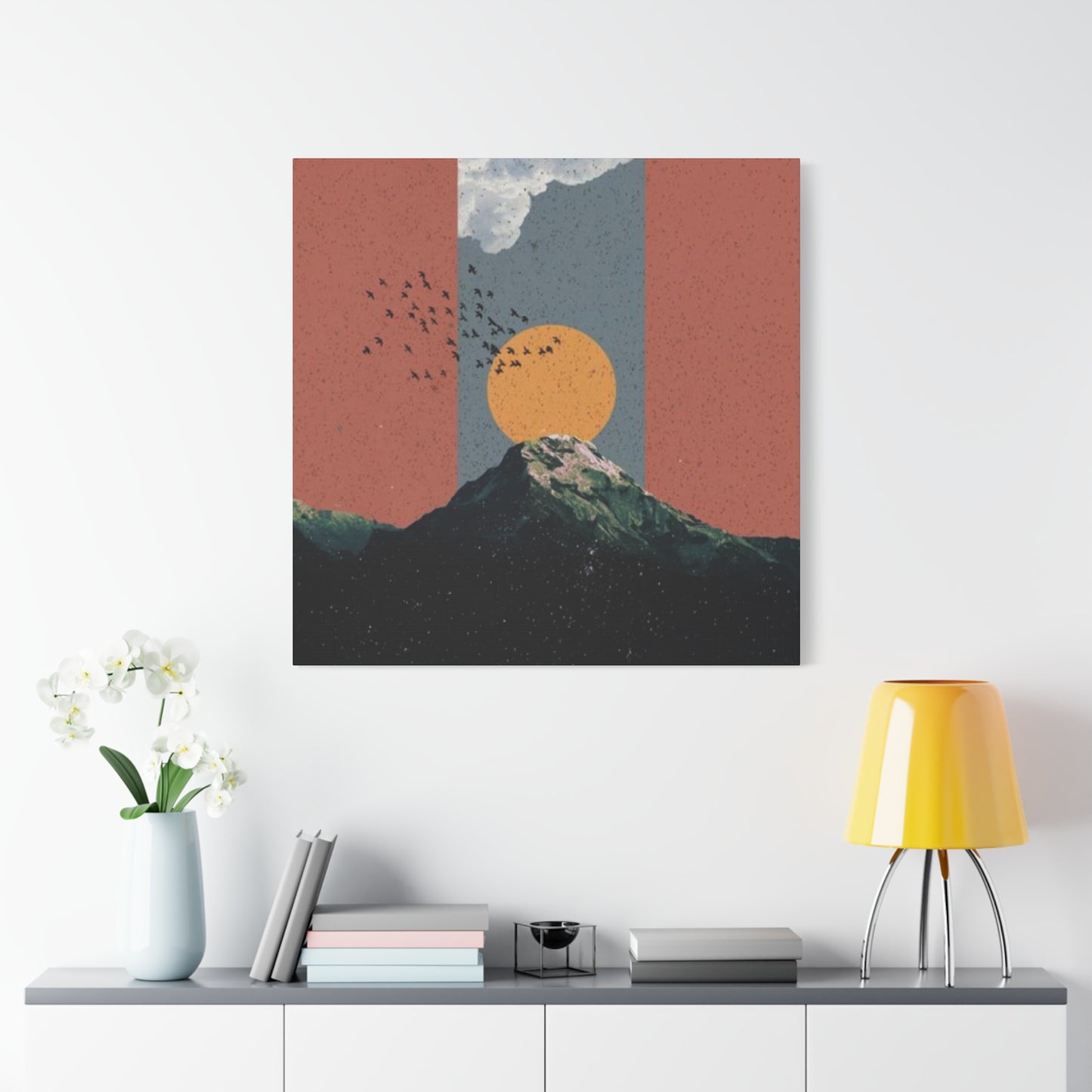
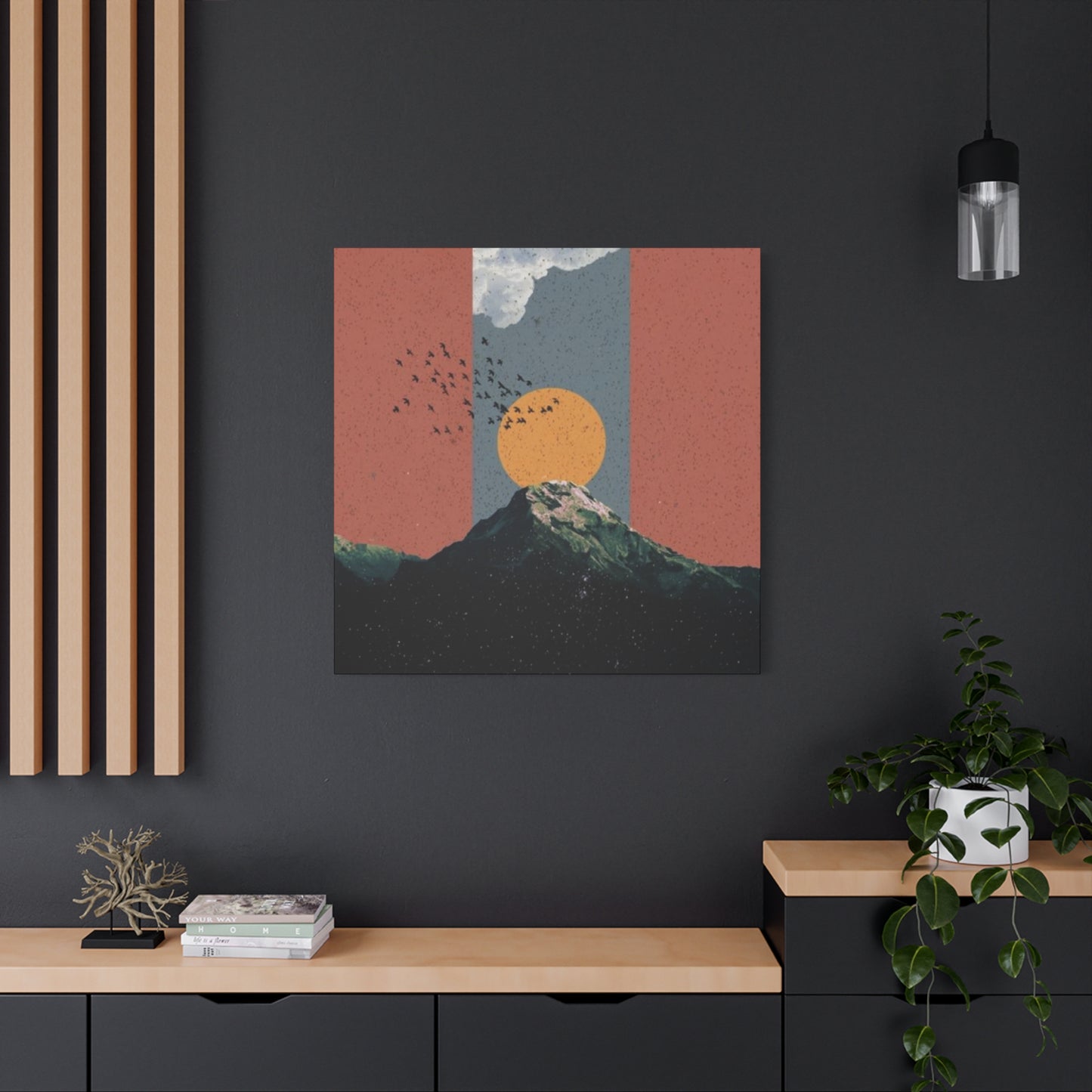
Mountain Sunrise Wall Art: A Complete Guide to Modern Aesthetic Expression
When dawn breaks over towering summits, something magical happens. The first rays of light paint the sky in brilliant hues, casting long shadows across jagged ridges and creating a spectacle that has inspired artists for generations. Today, this natural phenomenon finds new expression through contemporary artistic interpretations that bring the majesty of mountain sunrises into our living environments. This comprehensive exploration delves into how modern artistic approaches capture these breathtaking moments and how they can enhance our daily surroundings with their profound beauty and calming presence.
The marriage between natural phenomena and contemporary artistic expression has given birth to a fascinating genre that speaks to our fundamental connection with the wild world while satisfying our desire for refined aesthetic presentation. Mountain sunrise imagery, when filtered through the lens of modern artistic sensibilities, becomes more than mere representation. It evolves into a powerful visual language that communicates emotion, establishes atmosphere, and creates meaningful connections between viewers and the untamed landscapes that continue to captivate human imagination.
Geometric Forms in Mountain Sunrise Art
The application of geometric principles to mountain sunrise imagery represents a fascinating intersection between mathematical precision and organic natural beauty. When artists approach mountain landscapes through geometric interpretation, they distill complex natural formations into their most essential shapes and angles. This reductionist approach doesn't diminish the power of the original subject but rather amplifies certain aspects by focusing viewer attention on fundamental forms that might otherwise be lost in photographic detail.
Triangular compositions dominate this approach, as mountains themselves naturally suggest these powerful angular shapes. Artists working in this style often emphasize the pyramidal silhouettes of peaks, creating strong diagonal lines that draw the eye upward and generate a sense of aspiration and achievement. These triangular forms serve as anchors for the composition, providing stability and structure that grounds the more ethereal elements of sunrise coloration.
Circular and semicircular forms enter the composition through the representation of the sun itself, creating a compelling contrast with the angular mountain forms. This juxtaposition of curved and straight-edged shapes generates visual tension that keeps the eye engaged, moving between the hard geometry of mountain ridges and the soft curves of celestial bodies. The relationship between these contrasting forms mirrors the relationship between earth and sky, solid and ephemeral, permanent and transitory.
Rectangular elements often appear in these compositions as well, sometimes representing atmospheric layers or serving as framing devices that help organize the visual field. These horizontal bands of color or tone can represent clouds, haze, or simply abstract divisions that help structure the composition. The interplay between vertical mountain forms and horizontal atmospheric layers creates a grid-like foundation that appeals to viewers who appreciate ordered visual arrangements.
The use of geometric forms also allows for interesting explorations of symmetry and asymmetry. Some artists create perfectly balanced compositions where mountain peaks mirror each other across a central axis, while others embrace asymmetrical arrangements that feel more dynamic and unexpected. Both approaches have their merits, with symmetrical compositions offering a sense of peace and order, while asymmetrical arrangements generate energy and visual interest through imbalance.
Color blocking within geometric forms adds another layer of visual interest to these works. Rather than using gradual transitions between hues, artists might employ sharp boundaries between color zones, creating a mosaic-like effect that reads as both abstract and representational simultaneously. This approach can make familiar mountain sunrise scenes feel fresh and contemporary, appealing to viewers who want natural imagery that doesn't feel traditional or dated.
The geometric approach also facilitates the creation of pattern and repetition within the composition. Artists might repeat mountain peak shapes at different scales, creating a sense of rhythm and depth that guides the viewer's eye through the picture plane. This repetition can suggest distance and atmosphere while maintaining the strong graphic quality that defines geometric abstraction.
When geometric forms are applied to sunrise coloration, interesting possibilities emerge for organizing the chromatic progression of dawn light. Rather than mimicking the subtle gradations found in nature, artists might divide the sky into distinct color zones, each representing a different moment or quality of sunrise light. This segmentation can actually enhance the viewer's understanding of the complex color relationships present in dawn skies by making them more distinct and readable.
The geometric approach to mountain sunrise imagery also tends to emphasize negative space in productive ways. The areas between mountain peaks, the sky beyond the summits, and the ground plane below all become active participants in the composition rather than merely background elements. This thoughtful treatment of negative space creates breathing room in the composition and prevents the work from feeling cluttered or overwhelming.
Finally, geometric mountain sunrise art often achieves a timeless quality that transcends specific stylistic trends. By focusing on fundamental shapes and their relationships rather than on surface details or momentary effects, these works maintain their visual power and relevance across changing fashions in artistic expression. This enduring appeal makes them particularly valuable for those seeking artwork that will remain satisfying over years of daily viewing.
Minimalist Sunrise Mountain Scenes
The minimalist approach to mountain sunrise imagery embraces the principle that less is indeed more. By stripping away extraneous details and reducing compositions to their essential elements, minimalist artists create works that communicate with remarkable efficiency and power. This aesthetic philosophy finds perfect expression in mountain sunrise subjects, where the inherent drama of the scene requires little embellishment to make a strong impact.
At the core of minimalist mountain sunrise art lies a careful process of elimination. Artists working in this mode must decide what to include and, more importantly, what to exclude. A minimalist composition might feature just two or three mountain silhouettes against a simplified sky, with color limited to a restrained palette that captures the essence of dawn without attempting to reproduce every subtle gradation. This editing process requires deep understanding of what makes these scenes visually and emotionally compelling.
Color restraint plays a crucial role in minimalist mountain sunrise works. Rather than employing the full spectrum of colors visible in an actual sunrise, minimalist artists might limit themselves to three or four carefully chosen hues. This limitation forces them to make each color count, ensuring that every chromatic choice contributes meaningfully to the overall composition. The result often feels more focused and intentional than more color-rich alternatives.
Negative space becomes a primary compositional element in minimalist works. Large areas of uninterrupted color or tone give the eye places to rest and create a sense of openness and tranquility. In mountain sunrise contexts, this might mean reducing the sky to a single gradient or field of color, allowing the mountain silhouettes to stand in stark, simple contrast. This use of negative space also tends to emphasize the shapes of the mountains themselves, making their profiles more memorable and iconic.
The minimalist approach often favors flat areas of color over textured or graduated ones. This flatness can make the work feel more graphic and contemporary while also creating an interesting tension with the three-dimensional subject matter. When mountains and sunrises, which are inherently dimensional phenomena, are rendered as flat color fields, viewers must engage more actively with the work to reconcile the two-dimensional presentation with their three-dimensional knowledge of the subject.
Composition in minimalist mountain sunrise art tends toward the essential and archetypal. Rather than depicting a specific mountain range or a particular sunrise, these works often present a distilled, universal version of the experience. This universality allows viewers to project their own memories and associations onto the work, making it personally meaningful without being specifically representational.
The reduction of detail in minimalist works also has the effect of emphasizing form and proportion. Without the distraction of surface texture or intricate detail, viewers can appreciate the relationships between different elements more clearly. The relative size of the sun to the mountains, the proportions between different peaks, and the division of the composition between earth and sky all become more apparent and more important in determining the work's success.
Minimalist mountain sunrise art often achieves a meditative quality that makes it particularly suitable for environments where calm and contemplation are desired. The simplicity of these works doesn't demand constant attention but rewards sustained viewing, revealing subtle relationships and nuances that might not be immediately apparent. This quality makes them excellent choices for bedrooms, meditation areas, or anywhere else that benefits from a sense of serene permanence.
The aesthetic of reduction inherent in minimalism also tends to make these works feel more timeless and less bound to specific artistic trends or periods. While clearly modern in sensibility, minimalist mountain sunrise art avoids the kind of obvious stylistic markers that might date it to a particular decade or movement. This temporal ambiguity contributes to their lasting appeal and ensures they remain fresh and relevant over extended periods.
Creating effective minimalist mountain sunrise art requires tremendous discipline and restraint. The temptation to add just one more element or include additional detail can be strong, but successful minimalist works resist this impulse. Every element that remains in the final composition must earn its place by contributing essential information or emotional content. This rigorous editing process results in works that feel complete despite their apparent simplicity.
The power of suggestion becomes paramount in minimalist work. Rather than showing everything explicitly, these compositions imply depth, atmosphere, and detail through careful arrangement of simple elements. Viewers fill in the gaps with their own experiences and imagination, creating a collaborative relationship between artwork and observer that makes the viewing experience more personal and engaging.
Mountain Peaks in Modernist Style
Modernist approaches to mountain peak representation emerged from early twentieth-century artistic movements that sought to break from traditional representational methods. These approaches emphasized subjective interpretation over objective recording, allowing artists to communicate their personal responses to mountain landscapes rather than simply documenting their appearance. The result is mountain peak art that feels distinctly modern while still honoring the majesty of its subject matter.
The modernist perspective on mountain peaks often involves a degree of abstraction that moves beyond literal representation. Rather than attempting photographic accuracy, modernist artists might emphasize certain aspects of mountain forms while downplaying or eliminating others. This selective approach allows them to communicate essential qualities of mountain presence without getting lost in surface details that might actually obscure the deeper character of these formations.
Color becomes a vehicle for emotional expression rather than mere description in modernist mountain peak art. Instead of using colors that match the actual appearance of rocks, snow, and vegetation, modernist artists might choose hues based on psychological impact or symbolic meaning. A mountain might be rendered in deep blues and purples to convey its massive, mysterious presence, or in warm oranges and reds to emphasize its connection to ancient geological processes.
The influence of Cubism can be seen in some modernist mountain peak representations, where peaks are shown from multiple viewpoints simultaneously or broken down into faceted planes that suggest geological structure and mass. This approach acknowledges that our understanding of mountains comes from multiple perspectives and experiences rather than a single frozen moment, creating a more complete and nuanced representation.
Expressionist influences lead some modernist artists to distort and exaggerate mountain forms to heighten emotional impact. Peaks might be stretched vertically to emphasize their soaring height, or twisted and bent to suggest geological violence and tectonic forces. These distortions aren't meant to deceive but rather to communicate truths about mountains that straightforward representation might miss.
The modernist embrace of the picture plane as a flat surface rather than a window into illusionistic depth creates interesting possibilities for mountain peak representation. When mountains are acknowledged as shapes on a flat surface rather than objects in deep space, new relationships between forms become possible. Peaks might overlap in ways that create ambiguous spatial relationships, or the distinction between foreground and background might blur, creating a more unified compositional surface.
Pattern and rhythm play important roles in modernist mountain peak compositions. Rather than treating each peak as a unique individual form, modernist artists might emphasize the repetitive patterns created by multiple summits, creating a sense of rhythm and movement across the picture plane. This approach can transform a static landscape into something that feels more dynamic and alive.
The modernist interest in essential forms leads to mountain peak representations that focus on the basic geometric character of these formations. Peaks become triangles, pyramids, or crystals, their forms clarified and purified to reveal underlying structural principles. This reductive approach doesn't simplify in order to make things easier to understand, but rather to reveal fundamental truths that complexity might obscure.
Modernist mountain peak art often embraces bold graphic qualities that make these works particularly effective as decorative elements. Strong shapes, clear color relationships, and confident mark-making create images that read clearly from a distance while rewarding closer inspection. This graphic strength comes from the modernist rejection of fuzzy atmospheric effects and tentative execution in favor of decisive artistic choices.
The relationship between positive and negative forms becomes a conscious consideration in modernist mountain peak compositions. The sky or atmosphere surrounding peaks isn't merely empty space but an active participant in the composition, with its shape and character as carefully considered as the mountain forms themselves. This attention to the relationship between figure and ground creates more sophisticated and visually interesting works.
Modernist approaches also often incorporate a sense of subjective time into mountain peak representations. Rather than capturing a single moment, these works might suggest the passage of time through the inclusion of multiple light conditions, seasonal indicators, or the layering of different temporal experiences. This temporal complexity acknowledges that our relationship with mountains develops over extended time periods rather than in isolated moments.
The influence of industrial and technological imagery sometimes appears in modernist mountain peak art, with mountains taking on qualities of constructed rather than natural forms. This approach can create interesting tensions between the ancient, slow processes that create mountains and the rapid, intentional processes of human construction. The result challenges viewers to see familiar natural forms in new ways.
Sunrise Gradients in Modern Art
The gradient, a smooth transition from one color to another, finds powerful application in modern artistic interpretations of sunrise phenomena. These color progressions mirror the way dawn light transforms the sky, creating visual experiences that resonate with our deep familiarity with sunrise moments. Modern artists working with gradients in sunrise contexts have developed sophisticated approaches that go beyond simple mimicry of natural color progressions.
Creating effective gradients requires technical skill and color sensitivity. The transition between hues must feel organic and inevitable, without banding or awkward jumps that break the visual flow. In sunrise contexts, this often means working with warm color progressions that move from deep purples and blues through oranges and pinks to yellow and pale blue. The specific path this transition takes determines much of the emotional character of the work.
The relationship between gradients and mountain silhouettes creates fascinating compositional possibilities. When mountain forms are rendered as flat, solid shapes against gradient skies, a powerful contrast emerges between the steady, unchanging presence of the mountains and the transitory, flowing quality of the sky. This contrast can be used to explore themes of permanence and change, stillness and movement.
Some modern artists complicate simple gradients by introducing multiple color progressions within a single work. Rather than a straightforward movement from dark to light, these complex gradients might shift through several color families, creating more dynamic and unexpected chromatic relationships. This approach can suggest the complexity and variety of actual sunrise color phenomena while maintaining the clean, contemporary feel of gradient-based compositions.
The direction of gradients within sunrise mountain compositions carries significant visual and psychological weight. Vertical gradients suggest atmospheric depth and the progression of dawn light upward from the horizon. Horizontal gradients can emphasize breadth and the spread of light across the sky. Diagonal gradients introduce dynamic energy and can suggest the angle of incoming sunlight.
Digital tools have expanded the possibilities for gradient creation, allowing artists to achieve smoothness and precision that would be difficult with traditional media. However, many contemporary artists deliberately embrace less-than-perfect gradients that show evidence of the hand, valuing the humanity and warmth these imperfections bring to the work. This choice reflects broader conversations in contemporary art about the role of technology versus craft.
The use of gradients in modern sunrise mountain art often serves to unify compositions by providing a cohesive background against which more discrete elements can be arranged. The continuous color flow of a gradient creates a sense of wholeness and completeness that makes the composition feel resolved and satisfying. This unifying function makes gradients particularly valuable in works that might otherwise feel fragmented.
Gradients can also be used to create subtle depth and atmosphere in otherwise flat compositions. Even though a gradient is by definition a two-dimensional color progression, the way our eyes interpret these progressions often suggests three-dimensional space. Artists can exploit this perceptual tendency to create a sense of atmospheric depth without resorting to traditional perspective techniques.
The emotional temperature of a gradient-based sunrise composition is largely determined by the specific colors employed. Cool-toned gradients that emphasize blues and purples create a sense of calm and contemplation, while warm-toned progressions featuring oranges and reds generate energy and warmth. Artists can fine-tune the psychological impact of their work through careful color selection.
Some modern artists interrupt or fragment gradients to create more complex visual experiences. Rather than allowing the gradient to flow smoothly across the entire composition, they might introduce breaks, reversals, or bands of different color progressions. This fragmentation can suggest clouds, atmospheric layers, or simply create more dynamic visual interest.
The scale of gradient transitions also affects the character of the work. Subtle gradients that shift slowly across large areas create a sense of peace and spaciousness, while rapid progressions that move through many colors in a compressed space feel more urgent and dramatic. This control over transition speed gives artists another tool for modulating the emotional impact of their work.
Gradients in modern sunrise mountain art often serve a symbolic function beyond their purely visual role. The progression from darkness to light inherent in sunrise gradients can represent awakening, hope, renewal, and new beginnings. Artists can draw on these associations to create works that resonate on psychological and symbolic levels as well as aesthetic ones.
Nature Meets Modern Art Design
The intersection of natural subjects and modern design principles creates a fascinating hybrid aesthetic that appeals to contemporary sensibilities while maintaining connection to the organic world. This synthesis acknowledges that we live in a time when many people experience nature primarily through carefully curated and designed encounters rather than through raw wilderness immersion. Modern art design applied to natural subjects like mountain sunrises reflects this contemporary relationship with the natural world.
The application of modern design principles to natural imagery often involves a process of stylization that transforms realistic representation into something more iconic and universal. Rather than capturing the specific details of a particular mountain range at a particular moment, design-oriented approaches create idealized, archetypal versions of these experiences. This stylization makes the imagery more versatile and easier to integrate into various aesthetic contexts.
Grid systems, typically associated with graphic design and modern architecture, sometimes appear in nature-focused modern art as organizing principles. While nature itself doesn't follow geometric grids, imposing these structural devices on natural imagery can create interesting tensions and unexpected harmonies. A sunrise might be segmented into a grid of color samples, each representing a different chromatic moment, creating a systematic documentation of the event that feels both scientific and artistic.
The modern design emphasis on clarity and readability translates well to natural subjects. By eliminating atmospheric haze, reducing detail, and emphasizing strong shapes and clear color relationships, artists create images that communicate immediately and effectively. This clarity doesn't necessarily simplify or diminish the subject but rather presents it in a way that respects contemporary viewing conditions and aesthetic preferences.
Typography and natural imagery sometimes combine in modern design-oriented work, with words and letters integrated into mountain sunrise compositions. This combination acknowledges that our experience of nature is often mediated through language and narrative, not just pure visual experience. The integration of text and image creates pieces that function on multiple communicative levels simultaneously.
The modular approach favored in modern design finds application in nature-focused art through the creation of series or sets of related images. Rather than creating a single definitive representation of a mountain sunrise, artists might produce multiple variations that explore different aspects or moments of the experience. These variations can be displayed together as a larger installation or separately, with each piece contributing to a larger conceptual whole.
Color theory as developed in modern design contexts influences how artists approach natural color relationships. Rather than simply copying the colors visible in actual sunrises, designers apply principles of color harmony, contrast, and psychology to create optimized color schemes that feel natural while also serving specific aesthetic or emotional purposes. This designed approach to color can actually heighten the emotional impact of natural subjects.
The modern design principle of form following function takes interesting shape when applied to artwork. While the function of a mountain sunrise print might simply be to provide visual pleasure and create atmosphere, considering this purpose consciously leads to design choices that maximize these effects. Every element is evaluated based on its contribution to the overall impact rather than its representational accuracy.
Material considerations, important in modern design, also influence nature-focused modern art. Artists working in this hybrid mode think carefully about whether work should be rendered in matte or glossy finishes, on canvas or paper, with visible texture or smooth surfaces. These material choices affect how the work reads and how it interacts with its environment.
The modern design emphasis on adaptability and versatility influences how nature-focused art is created. Works might be designed to function in multiple orientations, to work at various scales, or to integrate with different color schemes. This flexibility reflects the modern design principle that good design should be adaptable to various contexts and needs.
Negative space, a crucial consideration in modern design, receives careful attention in nature-focused modern art. The areas around and between mountain forms and sunrise elements aren't treated as mere background but as active participants in the composition. This thoughtful use of negative space creates breathing room and prevents compositions from feeling cluttered or overwhelming.
The modern design interest in systems and patterns influences how artists approach natural subjects. Rather than treating each element as unique, design-oriented artists might identify repeating patterns, systematic variations, and structural similarities that can be emphasized and explored. This systematic approach can reveal underlying order in apparently chaotic natural phenomena.
Stylized Sun Over Mountain Prints
The representation of the sun as a formal element in mountain compositions requires careful consideration of size, position, color, and treatment. In stylized approaches, the sun often becomes more than a simple light source, transforming into a powerful graphic element that anchors the composition and establishes hierarchies of importance. The dialogue between the sun as a circular form and the angular character of mountain silhouettes creates a fundamental visual tension that energizes these works.
Stylization of the sun allows artists to depart from naturalistic representation in favor of more expressive or symbolic treatments. The sun might be rendered as a perfect circle of solid color, a radiating burst of linear elements, or an abstract glow that spreads across the sky. Each approach carries different associations and creates different relationships with the mountain elements of the composition.
The size of the sun relative to the mountains significantly affects the composition's character. An oversized sun that dominates the composition creates a sense of the cosmic and overwhelming, emphasizing the power and centrality of solar energy. A smaller sun, more in keeping with realistic scale relationships, creates a quieter, more balanced composition that emphasizes the mountains themselves. Artists manipulate these proportions consciously to achieve specific effects.
Positioning the sun within the composition involves strategic choices about balance and emphasis. A sun placed centrally creates symmetrical compositions that feel formal and stable. Off-center placement generates more dynamic energy and can create interesting interactions with mountain peaks, such as appearing to rest on a ridgeline or peek between two summits. These positional choices guide viewer attention and establish visual hierarchies.
The treatment of solar rays or emanations from the sun offers rich stylistic possibilities. Linear rays extending from the sun create geometric patterns that contrast with organic mountain forms. Soft glowing halos suggest atmospheric effects and diffusion. Some artists choose to eliminate rays entirely, presenting the sun as a simple disk that relies on color and position rather than radiating elements to establish its identity as the light source.
Color choices for the sun itself range from naturalistic yellows and oranges to more unexpected hues like white, pink, or even unconventional colors like blue or purple. These chromatic choices affect the emotional temperature of the work and can create interesting tensions with viewer expectations. A blue sun, for instance, immediately signals that the work prioritizes artistic expression over realistic representation.
The edge treatment of stylized suns varies from hard and crisp to soft and diffused. A hard-edged sun reads as a graphic element and emphasizes the two-dimensional nature of the composition. Soft edges suggest atmosphere and three-dimensional space, creating more realistic depth illusions. Many contemporary artists deliberately vary edge quality within a single work, using hard edges where graphic punch is desired and soft edges where atmosphere is important.
Some stylized sun representations incorporate pattern or texture within the circular form itself. The sun might contain concentric circles, radiating patterns, or even abstract imagery that suggests solar activity or symbolism. This internal complexity makes the sun more than a simple shape, transforming it into a focal point that rewards sustained attention.
The relationship between the sun's value and the surrounding sky requires careful calibration. Should the sun be lighter than the sky, creating a positive shape? Or darker, appearing as a dark disk against a bright atmosphere? Or should it match the sky in value while differing in hue? Each approach creates different spatial effects and different psychological impacts.
Multiple suns occasionally appear in stylized mountain sunrise compositions, suggesting time-lapse documentation or exploring symbolic meanings related to repetition and cycles. While not naturalistic, this multiplicity can create compelling rhythmic patterns and invite viewers to consider temporal dimensions of sunrise phenomena.
The stylized sun also serves an important compositional function as a fulcrum or anchor point. Its circular form provides a stable center around which other elements can be organized. The eye naturally returns to this circular element, making it an ideal location for establishing the composition's center of gravity, even when it's not literally centered within the frame.
Some artists treat the sun as a negative space, cutting a circular hole through mountain forms or atmospheric layers. This approach creates interesting figure-ground relationships and can suggest the sun's power to illuminate and reveal rather than simply to appear as another object in the scene.
Clean Lines in Sunrise Mountain Art
The emphasis on clean, precise lines in contemporary sunrise mountain art reflects broader aesthetic values that prize clarity, decisiveness, and graphic strength. Clean-lined approaches strip away the fuzzy edges and atmospheric softness that characterize photographic mountain images, replacing them with crisp boundaries and clear separations between elements. This aesthetic choice creates work that reads powerfully even at small scales or from considerable distances.
Achieving truly clean lines requires either significant technical skill with traditional media or the use of digital tools that allow for precise control. The crispness of these lines immediately signals contemporary sensibilities and separates this work from more traditional landscape approaches that emphasize atmospheric effects and blurred boundaries. The confidence implied by clean linework communicates authority and intentionality.
Clean-lined mountain profiles become bold graphic silhouettes that emphasize the distinctive character of different peak formations. Without the softening effects of atmospheric perspective, each mountain ridge becomes a strong contour line that demands attention. These profiles can be layered to suggest depth through overlap, with each successive layer reading clearly against those behind it due to the precision of its boundaries.
The meeting point between mountain and sky in clean-lined compositions becomes a critical edge that defines both elements simultaneously. The sharpness of this boundary emphasizes the contrast between solid earth and ethereal atmosphere, between the permanent and the transitory. This edge becomes a focal line that draws and holds viewer attention.
Color zones in clean-lined sunrise mountain art tend to meet at sharp boundaries rather than blending gradually. This creates a mosaic or stained-glass quality where each color area maintains its distinct identity. The result feels contemporary and graphic while still communicating atmospheric color relationships inherent in sunrise phenomena.
The discipline required to maintain clean lines throughout a composition forces artists to commit fully to their decisions. There's no room for tentative mark-making or fuzzy approximations in clean-lined work. Every line must be placed with intention and confidence. This requirement elevates the entire composition, giving it a sense of authority and completeness.
Clean lines also tend to emphasize the two-dimensional nature of the artwork rather than creating illusions of deep three-dimensional space. When boundaries are crisp and elements are clearly layered rather than atmospherically integrated, the picture plane asserts itself as a flat surface on which shapes are arranged. This honest acknowledgment of the medium's nature aligns with modernist aesthetic values.
Negative space becomes particularly important in clean-lined compositions because the precision of positive forms makes the character of negative areas more apparent. Any awkwardness in the shapes created by the spaces between elements becomes immediately obvious. Successfully managing negative space in clean-lined work requires the same attention and skill devoted to positive forms.
The interaction between vertical and horizontal lines creates structural foundations in clean-lined sunrise mountain art. Vertical lines suggest the upward thrust of peaks and the ascent of light, while horizontal lines stabilize compositions and suggest horizon lines and atmospheric layers. The balance between these directional forces determines much of the composition's character.
Diagonal lines, representing slopes and ridges, introduce dynamic energy into clean-lined compositions. Because these lines are rendered with precision rather than atmospheric softness, they create powerful directional forces that move the eye through the composition. Multiple diagonals can create rhythm and pattern while maintaining the clarity that defines this approach.
The absence of texture in clean-lined work places even greater emphasis on shape relationships and proportional harmonies. Without the distraction of surface variation, viewers respond primarily to the interaction of colored shapes and the lines that define them. This encourages more analytical viewing that appreciates formal relationships.
Clean lines also make these works particularly suitable for architectural contexts where they need to harmonize with built environments characterized by their own crisp edges and clean geometries. The aesthetic kinship between clean-lined artwork and modern architectural design creates natural affinity and mutual reinforcement.
Color Blocking in Modern Landscapes
Color blocking, the technique of arranging large areas of unmixed, ungraduated color in compositional relationships, brings graphic design sensibilities to landscape representation. When applied to mountain sunrise subjects, color blocking transforms subtle natural gradations into bold, decisive chromatic statements. This approach values visual impact and clarity over naturalistic reproduction, creating works that command attention and make strong decorative statements.
The power of color blocking lies in its simplification and amplification of color relationships. Rather than trying to capture every nuance of sunrise color, artists using this technique identify key hues and assign them to distinct zones within the composition. This reduction forces viewers to focus on essential color relationships and creates more memorable chromatic experiences.
Choosing which colors to include in a blocked composition requires careful consideration of both aesthetic and symbolic factors. Colors must work together harmoniously while also creating sufficient contrast to keep the composition lively. In sunrise mountain contexts, warm and cool colors typically appear together, with warm tones suggesting illuminated areas and cool tones indicating shadow or atmosphere.
The proportion allocated to each color block significantly affects the composition's balance and emphasis. A composition dominated by cool blues with small areas of warm orange will feel very different from one where these proportions are reversed. Artists manipulate these proportions to control the emotional temperature and visual weight distribution of their works.
The edges where color blocks meet become important linear elements in the composition. In pure color blocking, these edges are sharp and unmodulated, creating clear boundaries between chromatic zones. The shapes created by these boundaries become part of the composition's formal structure, with some shapes advancing visually and others receding based on color temperature and value relationships.
Color blocking naturally creates a sense of pattern and order in compositions. The arrangement of colored zones can suggest rhythm, create repetition, or establish hierarchies of importance. This ordered quality appeals to viewers who respond positively to clear organizational principles and visual logic.
Some artists use color blocking to create abstract interpretations of sunrise color progressions. Rather than showing a naturalistic gradient, they might stack horizontal bands of different colors, each representing a discrete moment or quality of sunrise light. This sequential arrangement can actually make the complexity of sunrise color changes more comprehensible by separating and identifying distinct phases.
The flatness inherent in color blocking emphasizes the two-dimensional nature of the artwork while also creating interesting tensions with the three-dimensional subject matter. Mountains exist in deep space, yet color blocking presents them as flat shapes on a surface. This tension between representation and abstraction engages viewers intellectually as well as visually.
Color blocking can be combined with other techniques like gradient or texture within individual blocks, creating hybrid approaches that benefit from both the clarity of blocking and the subtlety of other methods. A sky block might contain a subtle gradient, for instance, while mountain blocks remain flat and uniform.
The influence of mid-century modern design aesthetics is often apparent in color-blocked mountain sunrise art. The bold, optimistic use of color, the emphasis on clear geometry, and the balance between sophistication and accessibility all echo design sensibilities from that era. This association gives color-blocked work a retro quality that many contemporary viewers find appealing.
Strategic use of value contrast between color blocks ensures that compositions read clearly and that individual elements maintain their distinct identities. Without sufficient value contrast, adjacent colors might blur together visually even if they differ in hue. Careful consideration of value relationships ensures that compositions have proper structure and hierarchy.
Color blocking can also serve symbolic or narrative purposes beyond pure visual organization. Different color zones might represent different times of day, different emotional states, or different conceptual ideas related to the sunrise experience. This symbolic dimension adds depth and meaning to what might otherwise be purely decorative works.
Using Mountain Art to Create Calm
The capacity of mountain sunrise imagery to generate feelings of calm and tranquility makes it valuable in environments where stress reduction and emotional regulation are priorities. The specific qualities that allow this imagery to function therapeutically deserve examination, as understanding these mechanisms helps explain why certain compositional choices prove more effective than others at creating peaceful atmospheres.
The association between mountains and permanence contributes to their calming effect. Mountains represent stability and endurance, qualities that provide psychological comfort in a world characterized by rapid change and uncertainty. When we view mountain imagery, we connect subconsciously with these associations, finding reassurance in visual reminders of permanence.
Sunrise imagery carries strong associations with new beginnings, hope, and the daily renewal of light. These optimistic associations create positive emotional responses that counter anxiety and depression. The daily reliability of sunrise also provides a sense of cosmic order and predictability that many people find psychologically stabilizing.
The color palettes typical of sunrise mountain scenes tend toward hues known for their calming psychological effects. Blues and purples, common in pre-dawn and dawn skies, have well-documented calming properties. Even the warmer oranges and pinks of sunrise typically appear in softer, less saturated versions that feel gentle rather than aggressive.
Simplified, uncluttered compositions contribute to calming effects by reducing visual complexity and cognitive load. When compositions feature clear, easily parsed elements rather than busy detail, viewers can relax rather than working to decode complicated visual information. This simplicity allows the mind to rest while still providing something aesthetically satisfying to contemplate.
The presence of expansive sky in mountain sunrise compositions provides visual breathing room that translates into psychological spaciousness. Large areas of relatively uniform color give the eye places to rest, creating a sense of openness that can feel liberating to viewers who spend much of their time in confined or visually cluttered environments.
Horizontal orientation and horizontal compositional elements contribute to feelings of calm because horizontal lines are associated with rest, stability, and groundedness. While mountain peaks introduce vertical elements, the horizon line and often horizontal atmospheric layers in sunrise scenes balance these with stabilizing horizontal forces.
The absence of human figures and built structures in most mountain sunrise art creates a sense of sanctuary from social pressures and human complexity. These empty landscapes offer psychological retreat into simpler, more elemental realms where natural processes rather than human drama dominate.
The scale of mountains relative to human size, implied even when humans aren't depicted, can be calming through the perspective it provides. Mountains remind us of our small place in a vast natural world, which can paradoxically reduce anxiety by placing personal problems in cosmic context.
Soft color transitions and gentle gradients found in many sunrise mountain works create visual experiences that feel soothing rather than jarring. The eye moves smoothly through these compositions without encountering harsh contrasts or disrupting boundaries, creating a sense of flow and ease.
The timeless quality of mountain sunrise imagery means these works don't feel dated or trendy, which contributes to their ability to maintain calming effects over long periods. Unlike imagery tied to specific cultural moments or aesthetic fashions, archetypal natural scenes remain relevant and effective across time.
The meditative potential of mountain sunrise imagery comes partly from its capacity to serve as a focal point for contemplative attention. The combination of visual interest sufficient to engage attention with simplicity sufficient to allow mental rest creates ideal conditions for meditative states.
Natural symmetry and balance in mountain sunrise compositions satisfy our innate preference for ordered, harmonious visual arrangements. When compositions feel balanced and resolved, viewers experience a sense of rightness and completeness that translates into emotional calm.
Modernism's View of Natural Beauty
Modernist approaches to natural beauty represent a significant departure from romantic and impressionist traditions that preceded them. Rather than emphasizing emotional response to nature's grandeur or attempting to capture fleeting atmospheric effects, modernism brought analytical, structural, and sometimes skeptical perspectives to natural subjects. This shift reflected broader cultural changes and new philosophical attitudes about humanity's relationship with the natural world.
Conclusion
In conclusion, mountain sunrise wall art offers a powerful and evocative way to capture the serene beauty and transformative energy of dawn amidst nature’s grandest landscapes. As explored throughout this guide, these artworks do more than merely depict scenic vistas—they embody a moment of renewal, hope, and natural majesty that resonates deeply with modern aesthetic sensibilities. Whether rendered through vibrant color palettes or subtle, minimalist forms, mountain sunrise art connects viewers to a universal experience of peace and possibility.
The allure of mountain sunrise scenes lies in their ability to balance complexity with simplicity. The interplay of light and shadow at sunrise highlights the rugged contours of mountain ranges while bathing them in warm, uplifting hues—pinks, oranges, and golds—that symbolize new beginnings. This natural spectacle lends itself beautifully to various artistic styles, from hyper-realistic photography to impressionistic paintings and even abstract expressions. Each style offers a unique perspective, inviting viewers to interpret the scene in ways that speak to their personal aesthetic and emotional landscape.
When integrating mountain sunrise wall art into modern interiors, thoughtful consideration of scale, color harmony, and placement enhances its impact. Large-format canvases can dominate a room with immersive vibrancy, making them ideal focal points in living rooms or bedrooms. Conversely, smaller prints or triptychs can create intimate visual stories on gallery walls or corridors. Color coordination with surrounding decor—whether neutral palettes that allow the artwork’s hues to shine or complementary tones that echo natural elements—ensures a cohesive and inviting atmosphere.
Material choice also plays a significant role in expressing the modern aesthetic through mountain sunrise art. High-quality canvas prints, metal panels, or textured mixed-media works add depth and tactile interest, while frameless or sleek frames maintain clean lines consistent with contemporary design trends. Lighting, too, is crucial: positioning art to catch natural or soft accent light amplifies the luminous qualities intrinsic to sunrise imagery.
Beyond decor, mountain sunrise wall art carries symbolic and emotional weight. It represents renewal, resilience, and the cyclical nature of life—concepts deeply relevant to modern viewers seeking mindfulness and inspiration. This emotional resonance elevates the art from decorative to meaningful, fostering connection and contemplation within living spaces.
In embracing mountain sunrise wall art, individuals cultivate not only aesthetic beauty but also a daily reminder of nature’s enduring rhythms and the promise of each new day. It’s a celebration of light overcoming darkness, complexity balanced with clarity, and timeless landscapes reinterpreted for contemporary life.
Ultimately, mountain sunrise wall art is a versatile, profound, and uplifting choice for anyone looking to express modern aesthetic values while honoring the natural world’s sublime grandeur. Through careful selection and thoughtful display, it transforms walls into canvases of inspiration and serenity.

